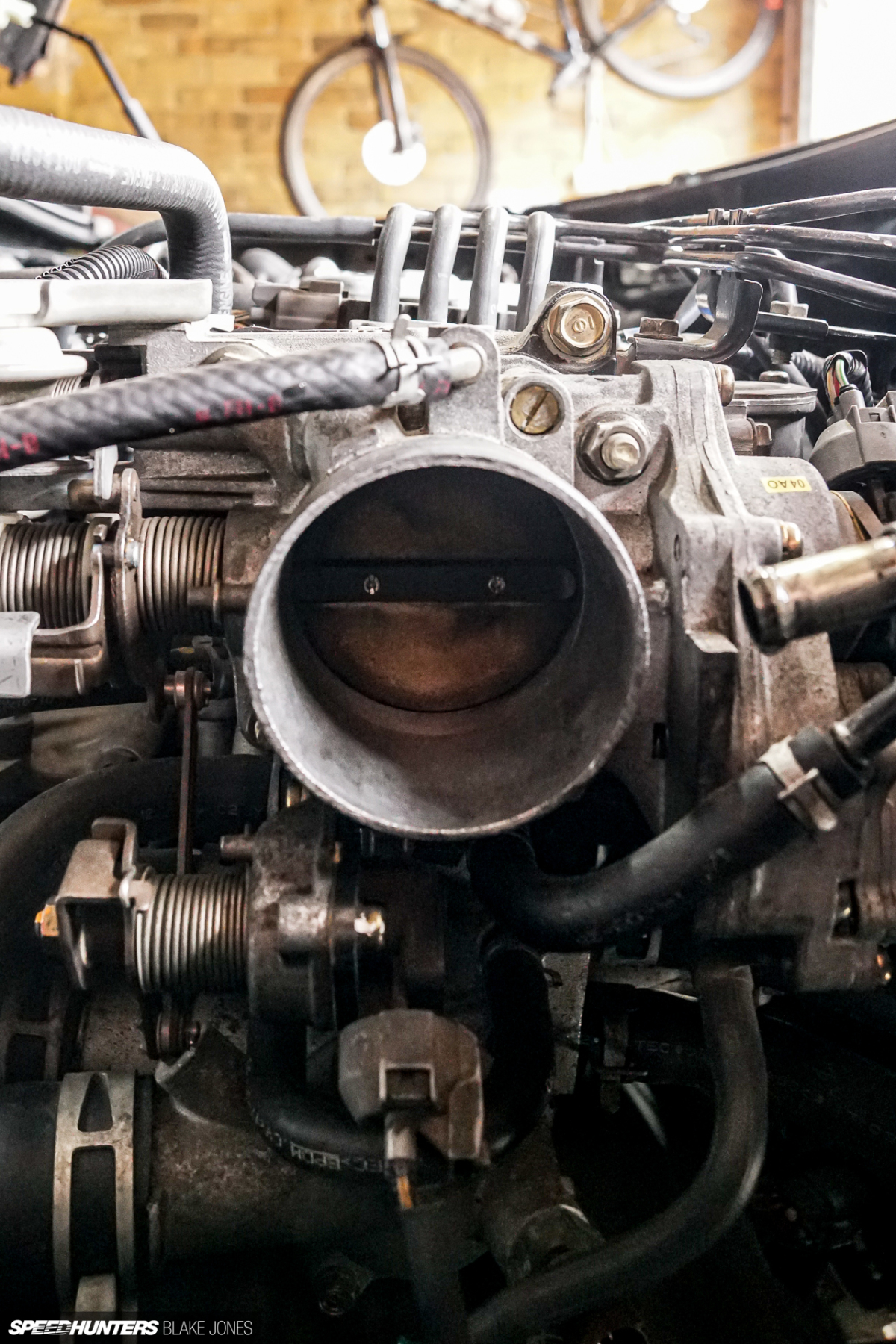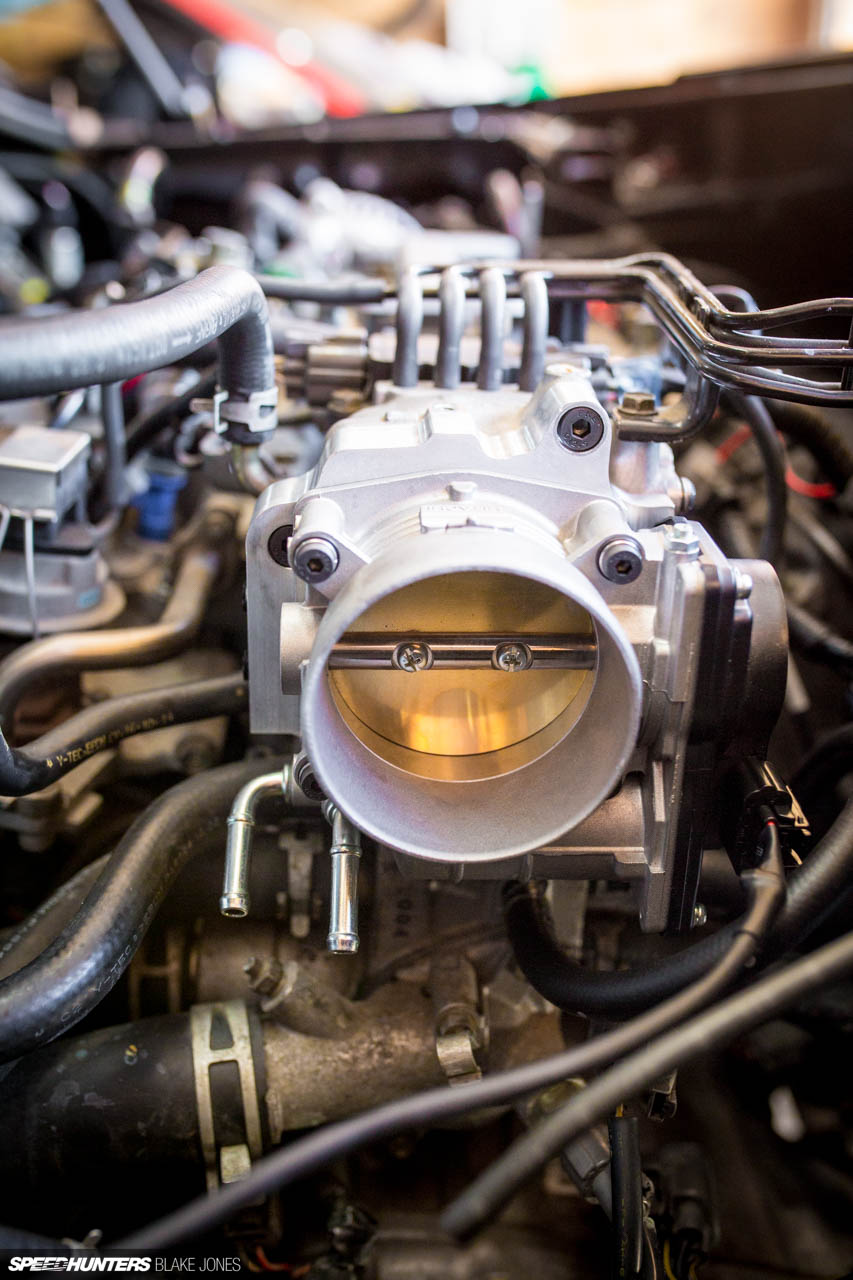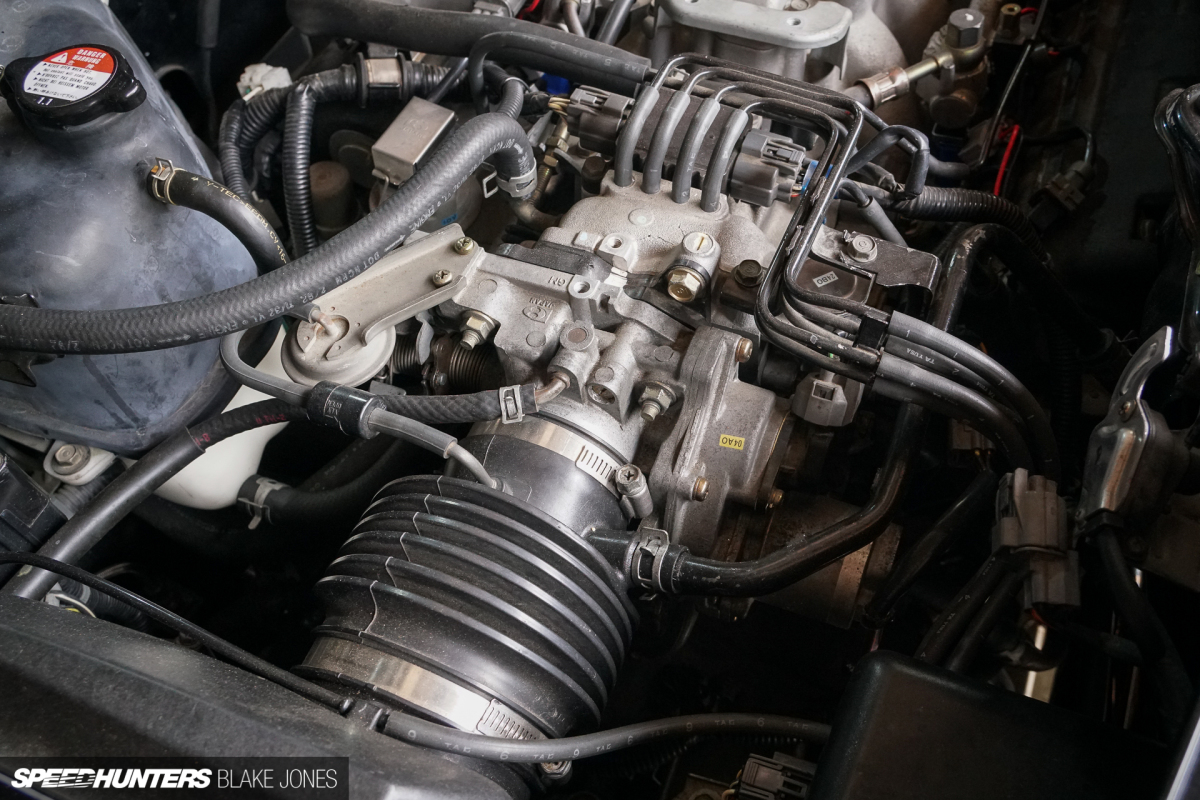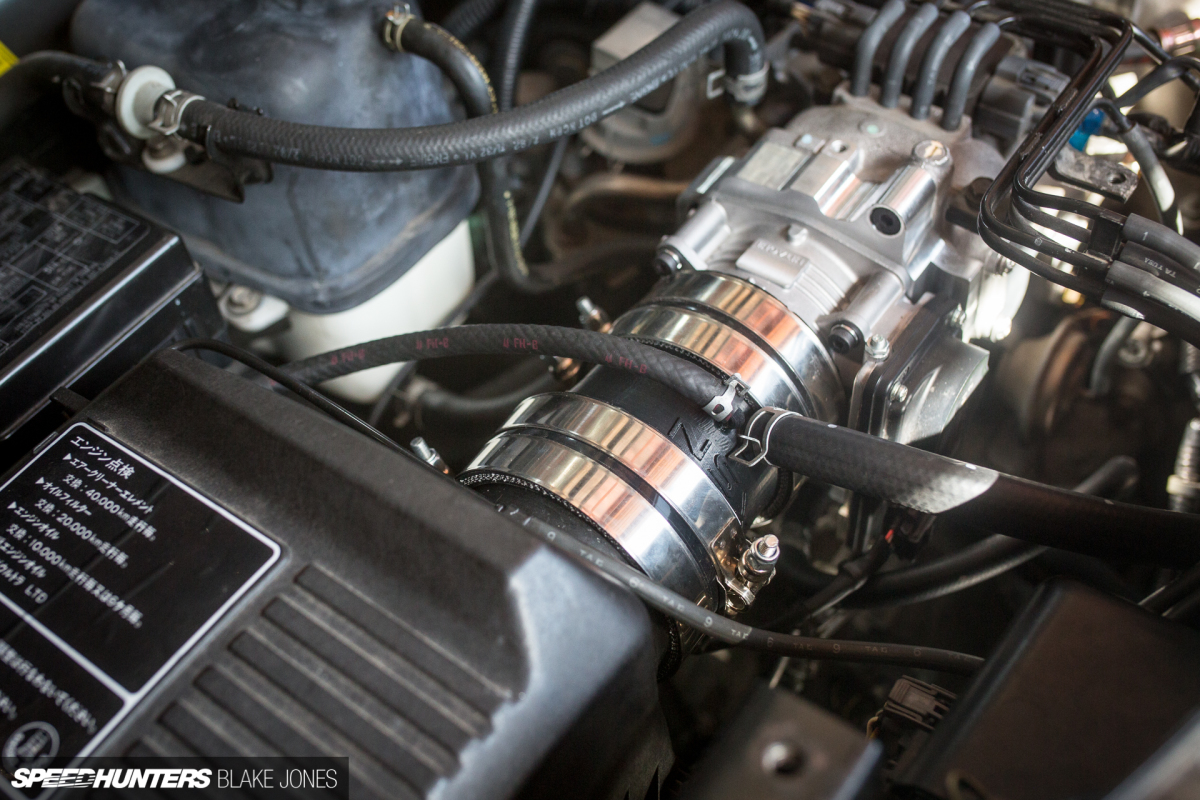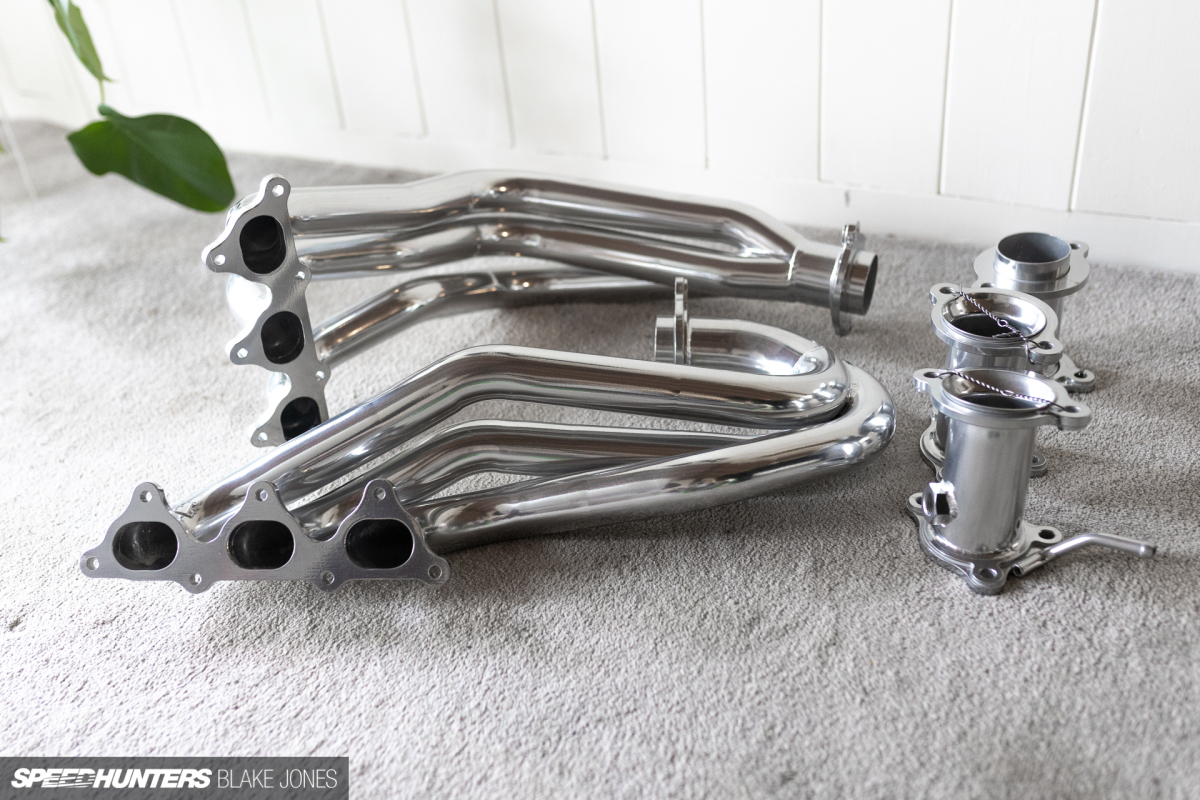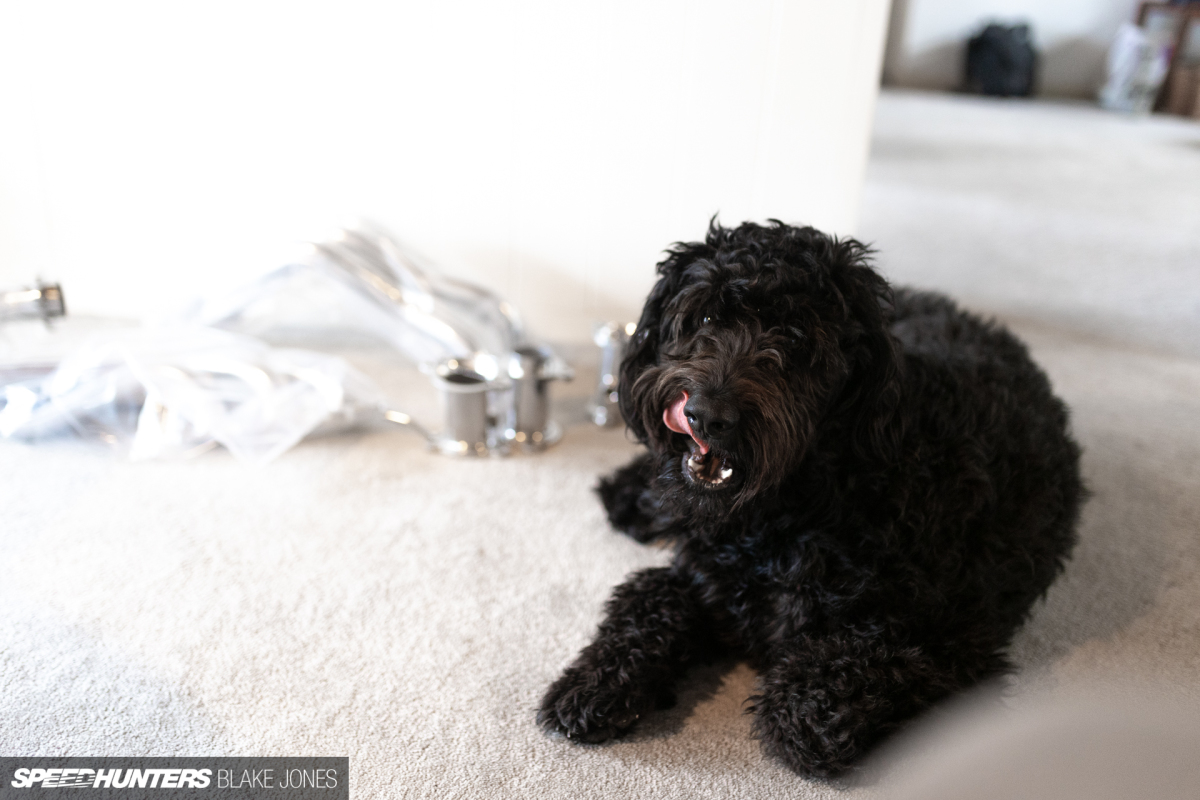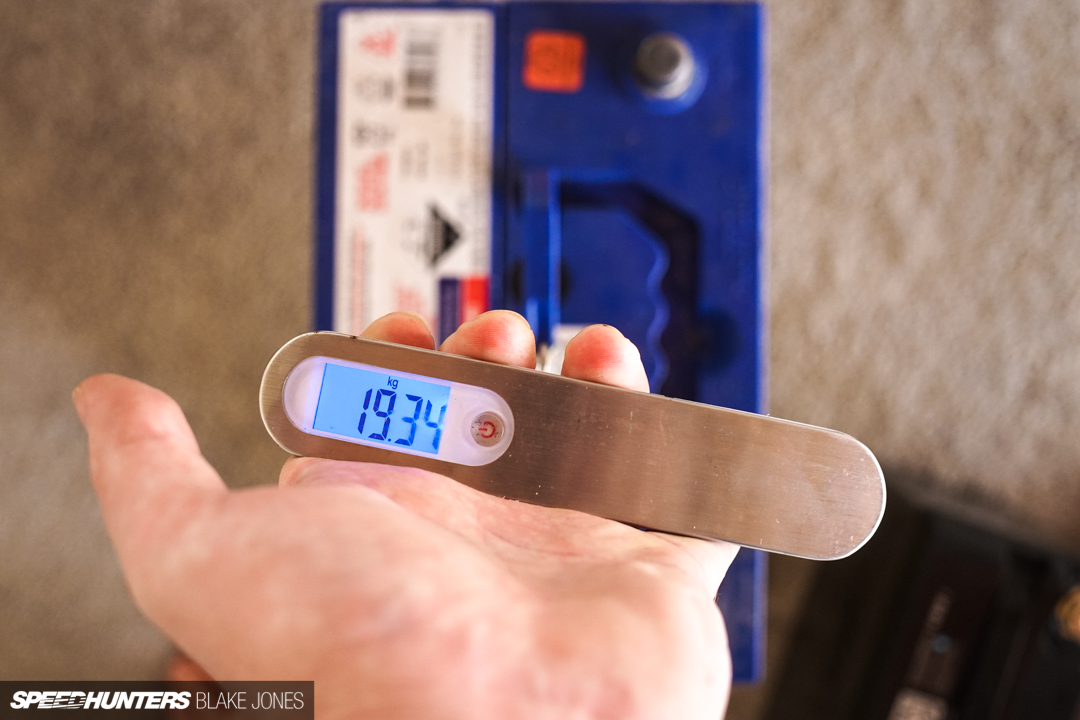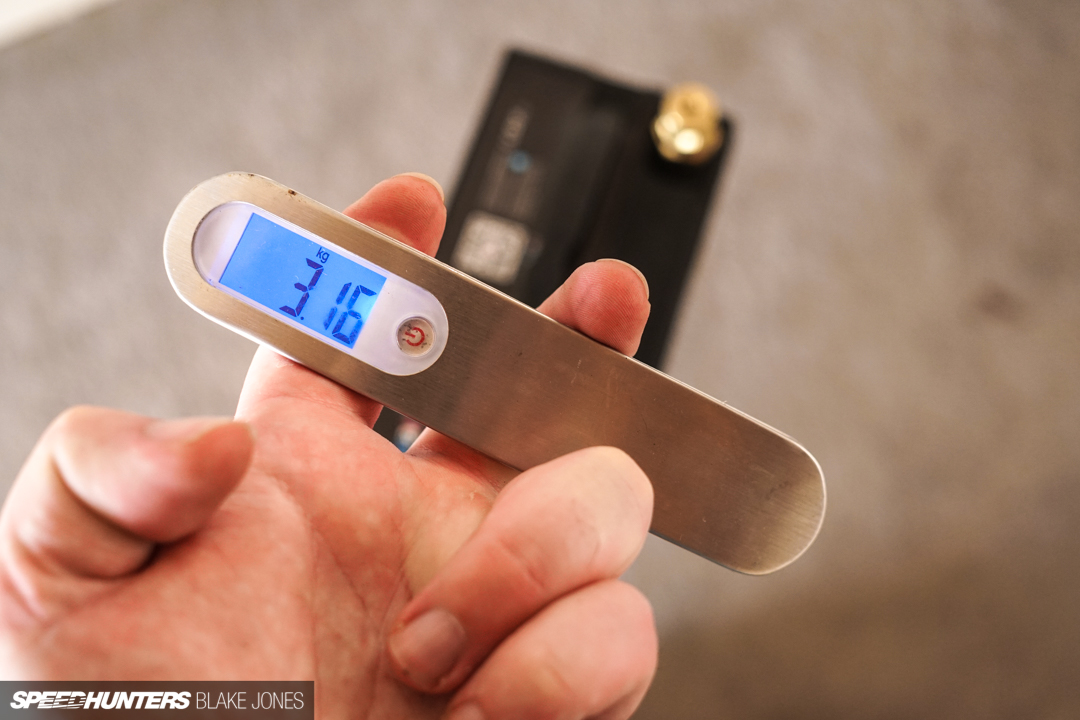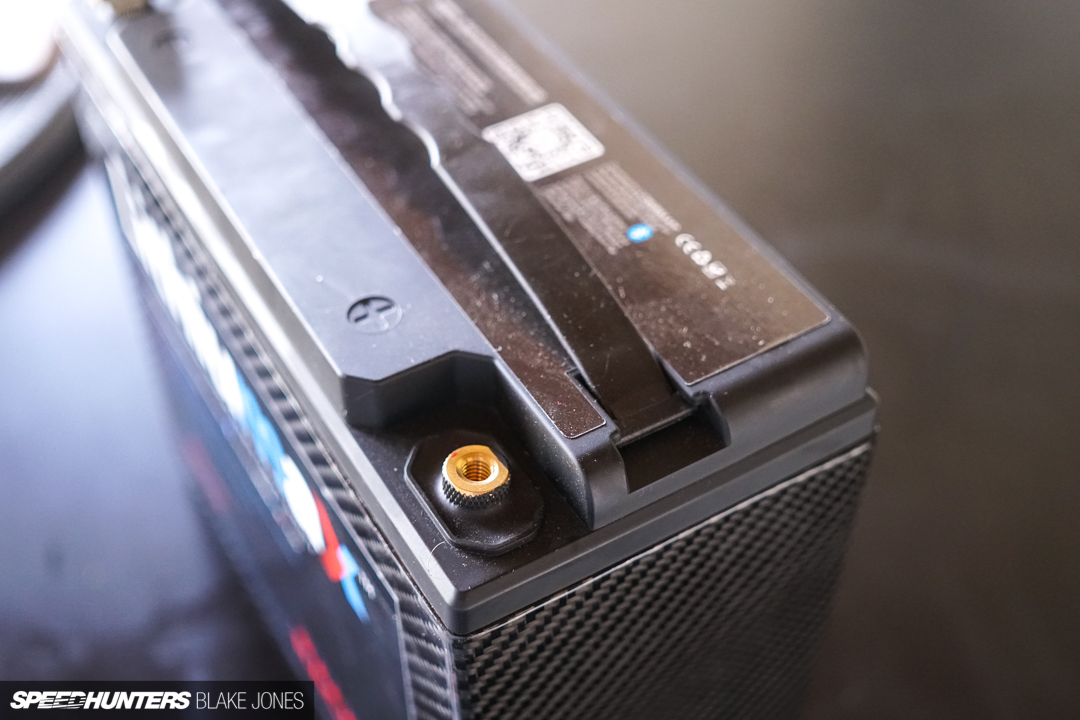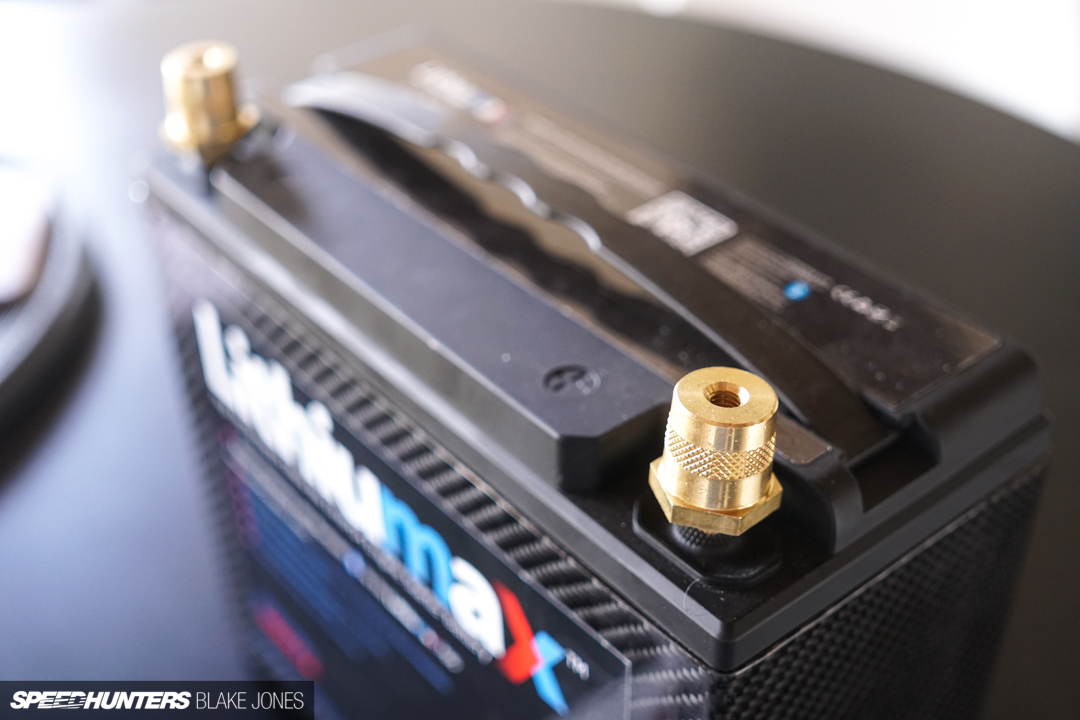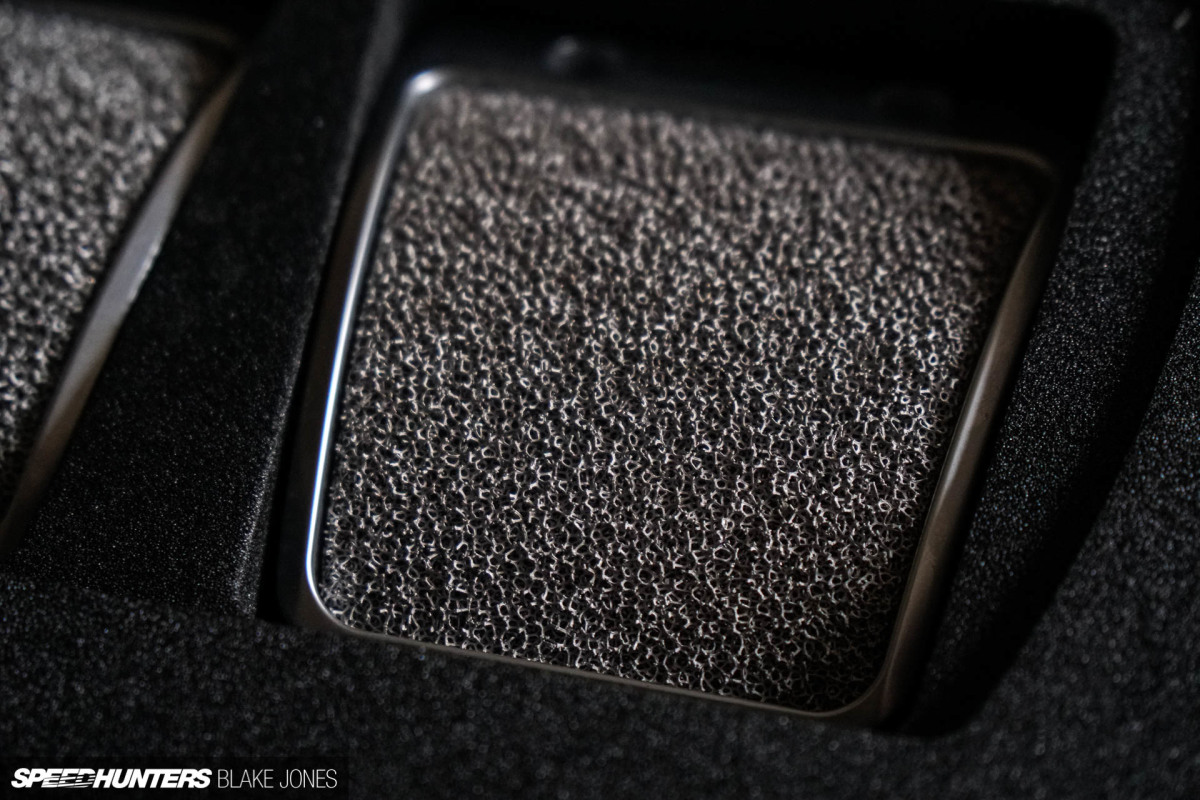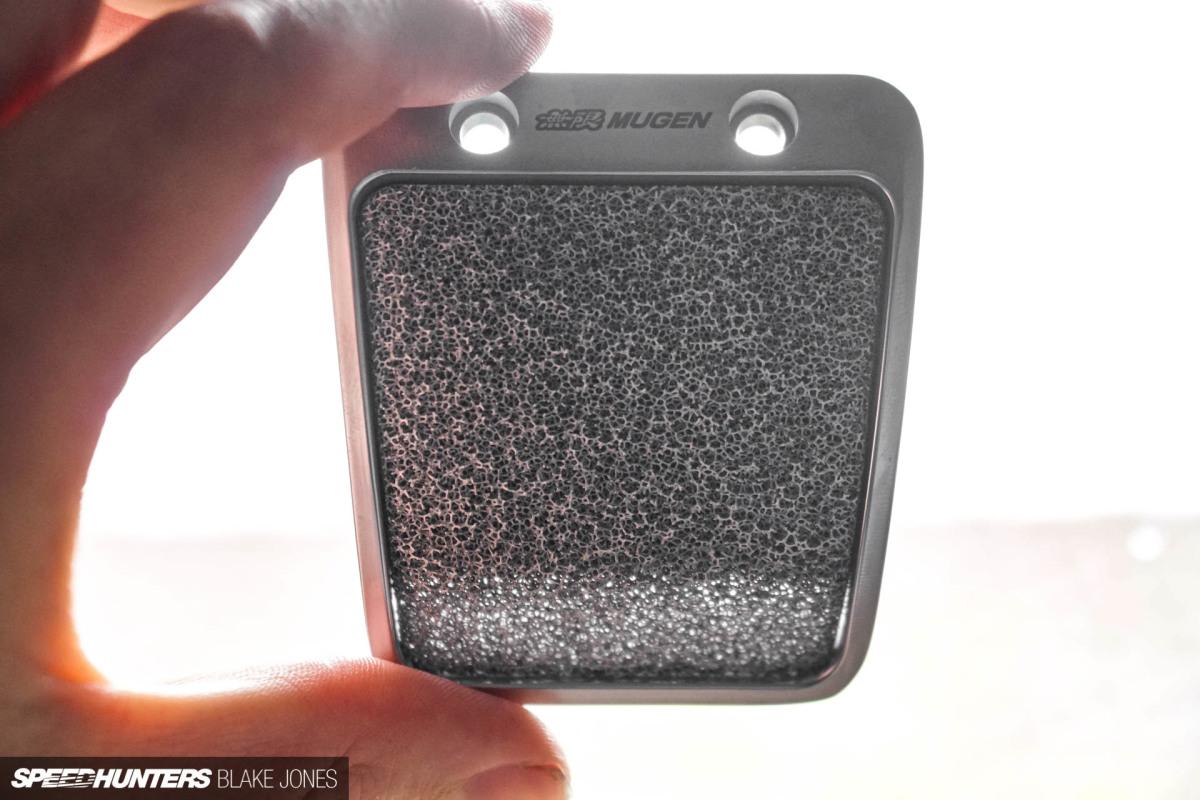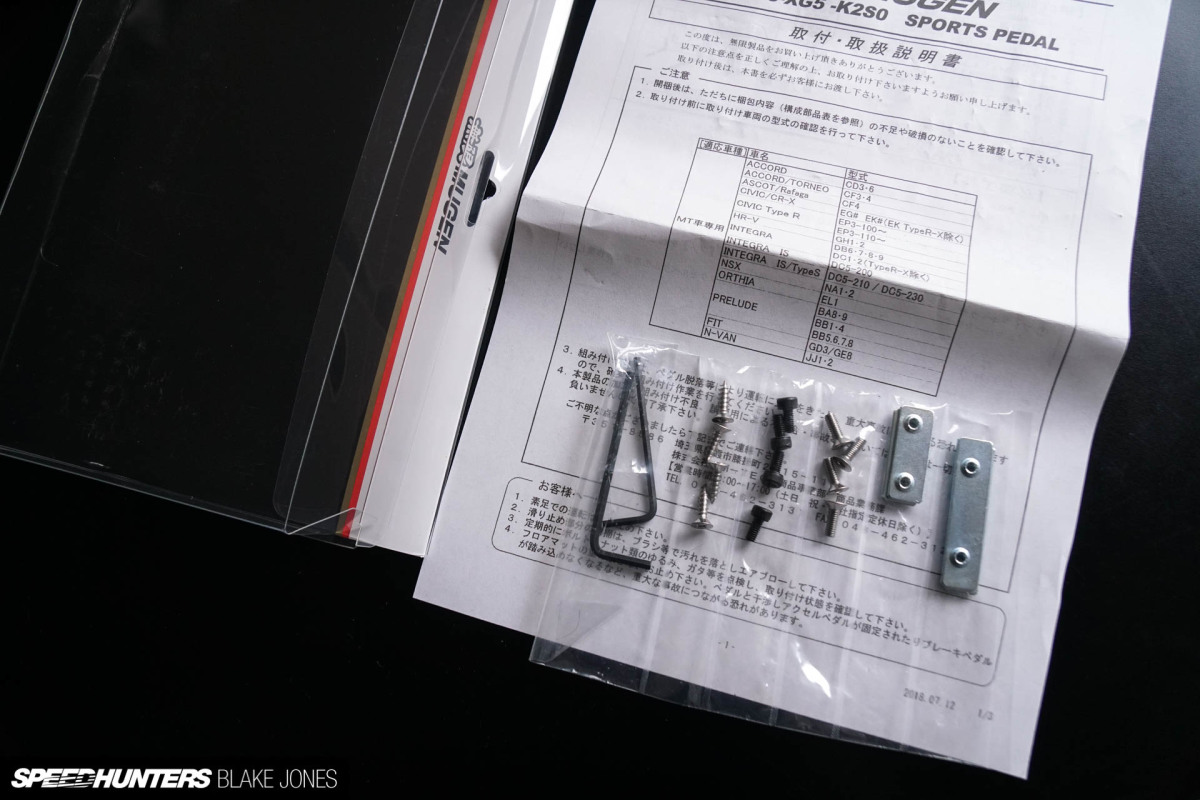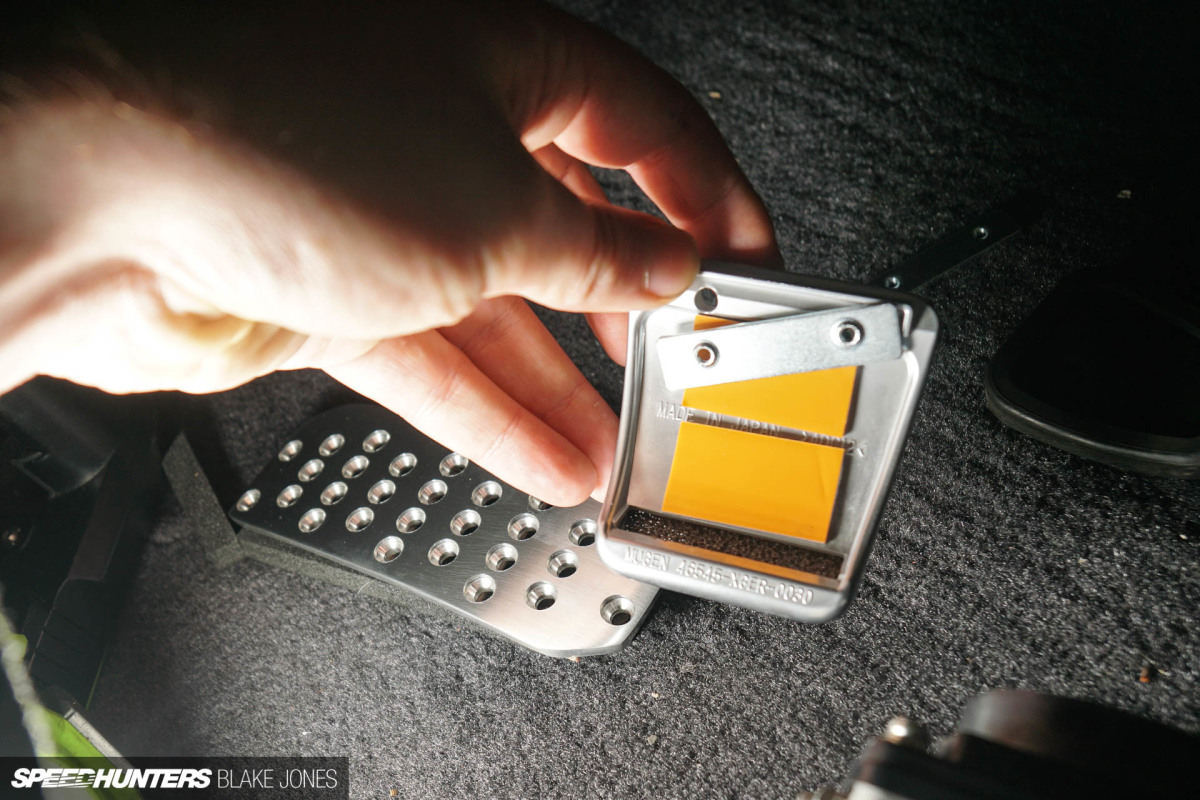[ad_1]
Although I’ve been enjoying Dino’s Porsche parlour and Toby’s al fresco engineering on Speedhunters lately, it’s past due time for a Project NSX update.
There’s a bit of everything in this one – some hefty weight reduction, a bit of chassis stiffening, a touch of bling, upgrades to electronics and perhaps even a bit more power.
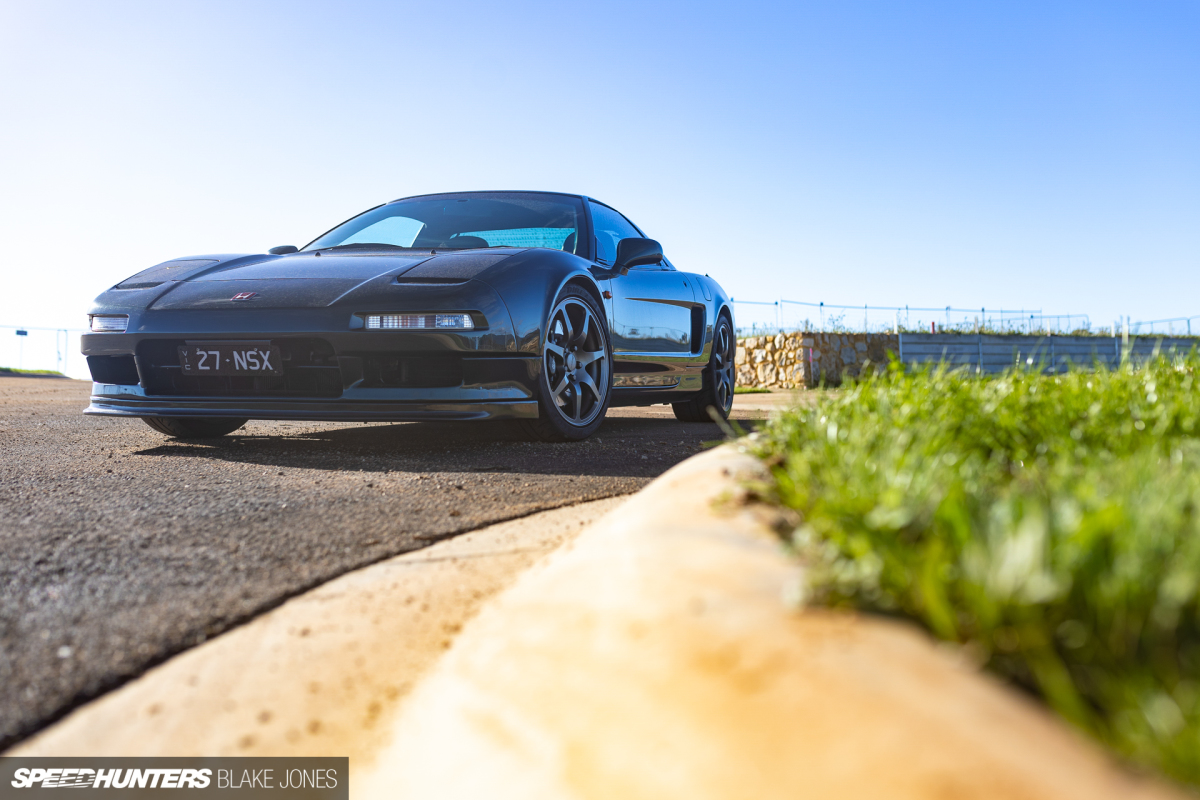
Overall, it’s a mix of individual small changes which together bring Project NSX ever closer to my one-eyed idea of the ideal sports car. Some changes that perhaps only I would notice, but I always enjoy the opportunity to share them with Speedhunters readers.
Analog No More
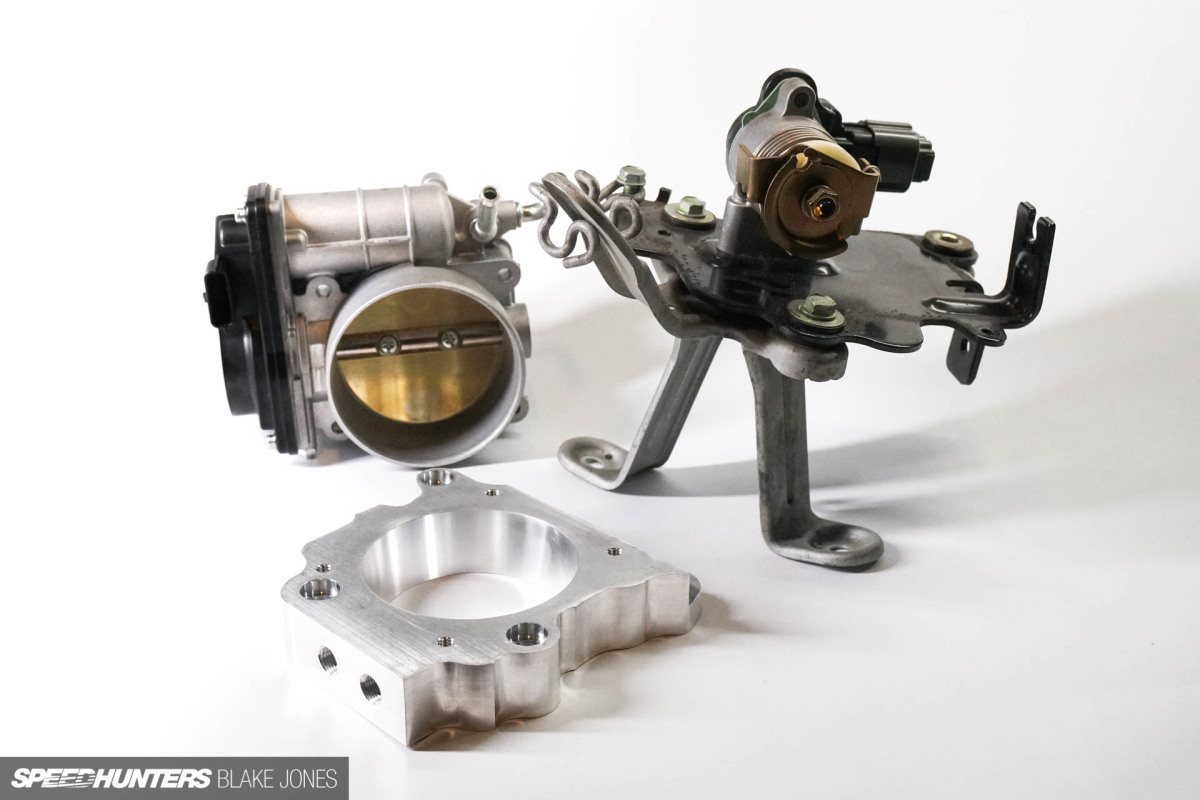
First up, this trio of goodies I’d collected. Since installing the Haltech Elite 2500 a few years back, I had been considering a drive-by-wire (DBW) conversion. I opportunistically picked up a cheap accelerator pedal position (APP) sensor module off Yahoo! Auctions when I was still in Japan; the NA2 NSX was a factory DBW car and owners of those vehicles would ditch the electronic control if they were ‘upgrading’ to an aftermarket ECU which couldn’t control the drive-by-wire. I guess it’s going against the grain in that regard, but today in Australia the trend is absolutely towards using DBW wherever possible.
Why DBW? In one word, control. By bringing the ECU into the process of throttle actuation, functions like traction and cruise control as well as engine protection can be set up with relative ease. The responsiveness of the throttle can also be mapped (and varied on the fly, à la ‘Sport Mode’ if desired). For these reasons, you’d be hard pressed to find a contemporary performance car without an electronic throttle.
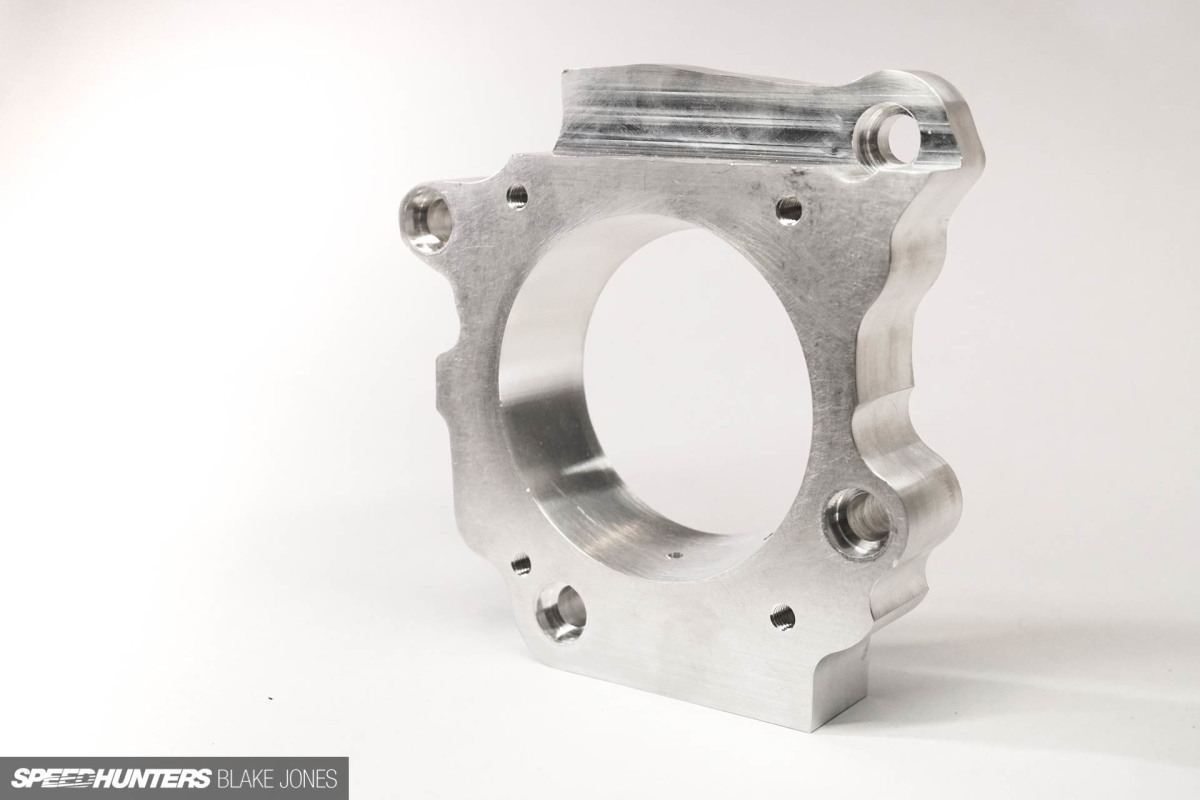
A suitable electronic throttle body is easy to find, and if an NSX APP sensor module can’t be located, an S2000 one could be made to work rather easily. What cannot simply just be found is this – an adapter to mate the throttle body to the intake manifold. Carl Hernandez, the brain behind Black Box Tuning, has prototyped and since commercialised this solution for mating an NSX intake manifold up to a modern (Denso) throttle body. He was kind enough to send me one to try out.
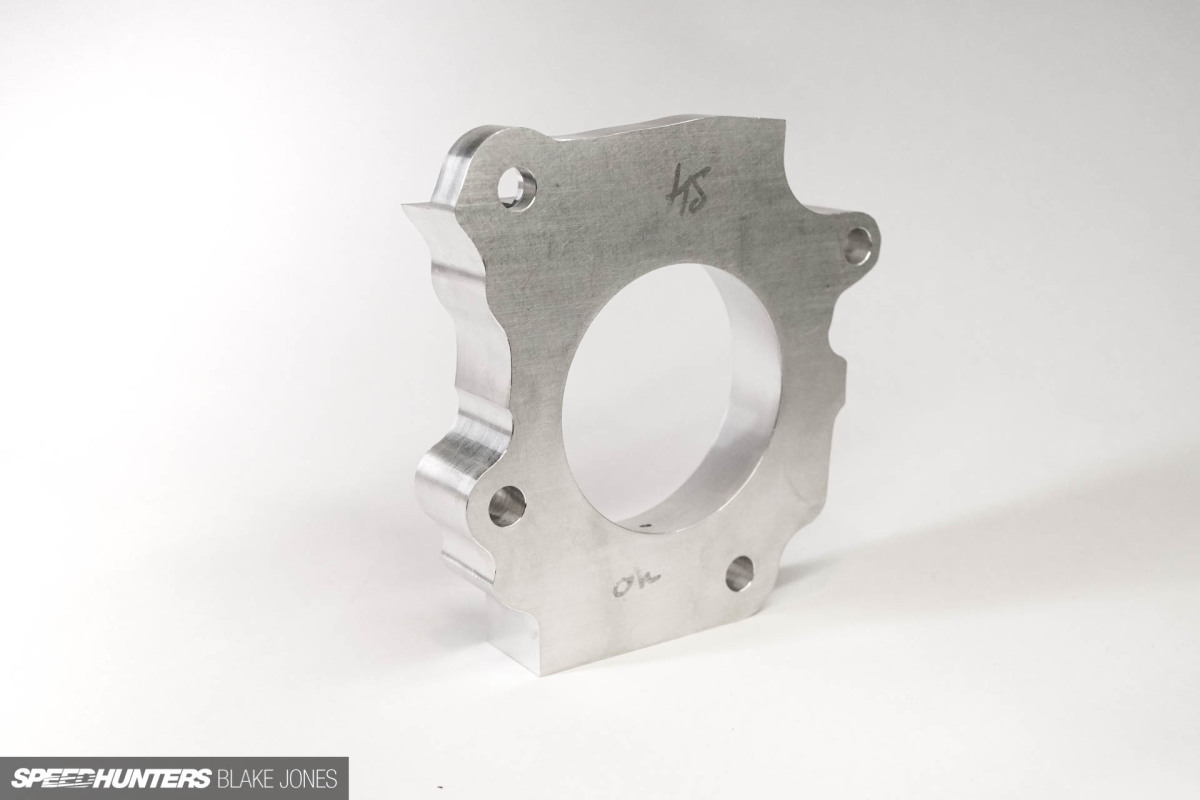
It may look simple here on your screen, but holding the adapter in your hand makes you realise how much effort went in to getting the product just right. It includes ports on the underside for additional, hidden sensors, and the main opening is tapered down so the flow from the larger throttle body to the smaller intake manifold is as smooth as possible. The seemingly abstract outline fits like a puzzle piece into the NSX’s engine bay.
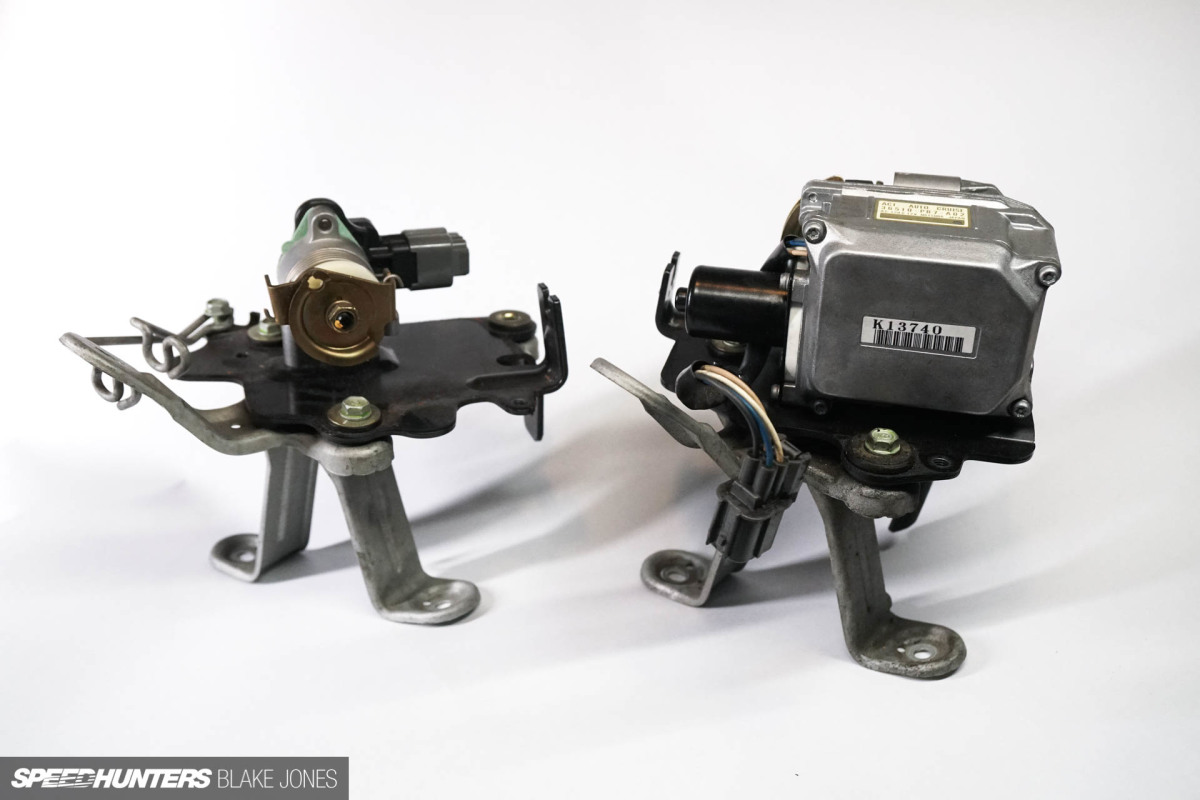
Here is the standard accelerator pedal position sensor (left) next to the original cruise control actuator (right) which it replaces. It’s much lighter, so more weight saved here. These are both mounted to the same points in the NSX ‘frunk’ and are linked by a cable to the pedal.
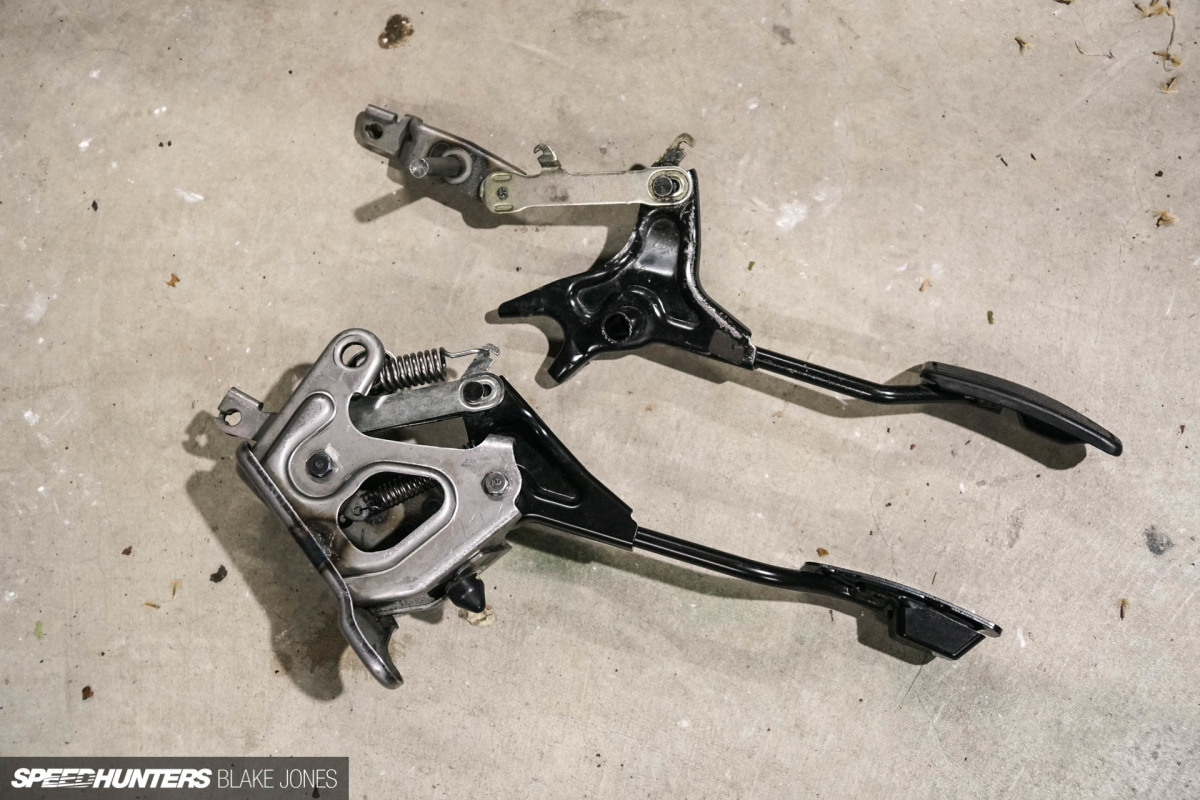
The pedal also needs to be exchanged for one from the later vehicle. Here you can see the old linkage (top), and the new one installed into the existing pressed-aluminium mount. This allows the pedal linkage to pull the cable to the APP, as opposed to the cable link being pulled by the cruise control unit.
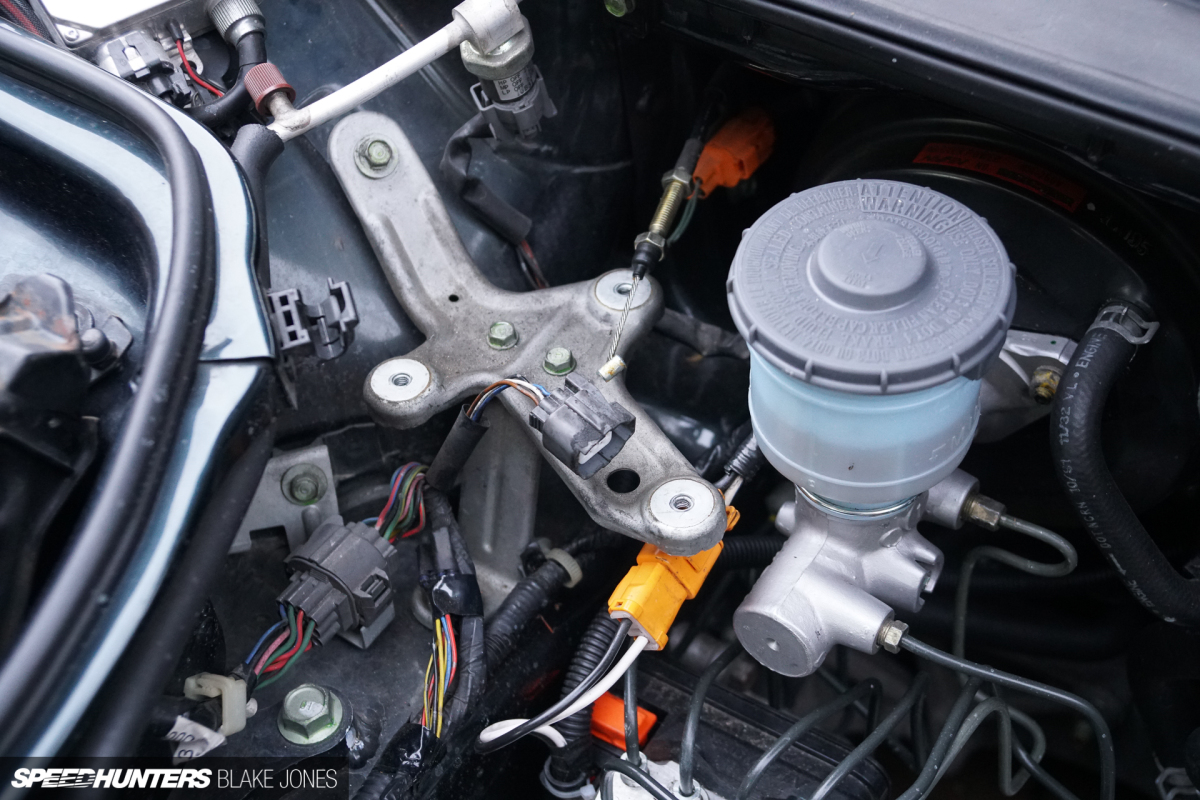
Here you can see the cruise control bracket which is reused for the pedal position sensor. The cruise control cable can be seen to the left of the brake fluid reservoir cap.
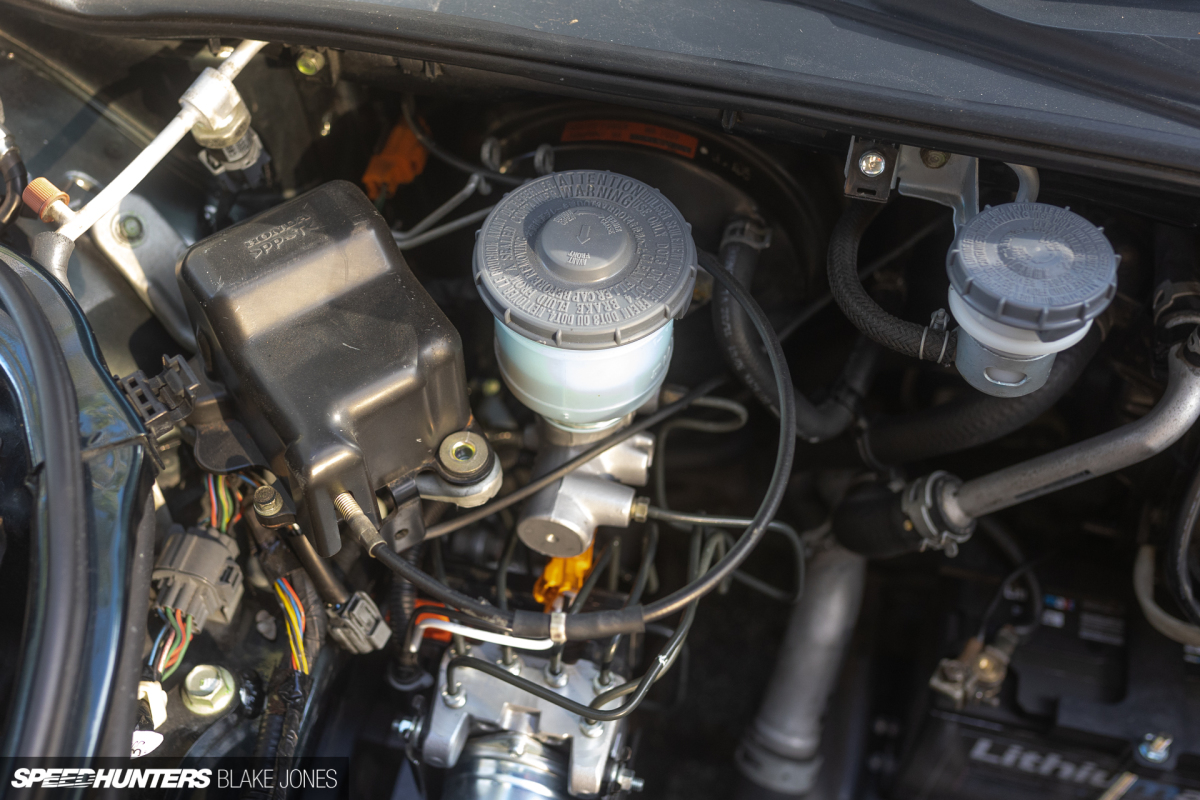
Pedal position sensor installed and cover in position.
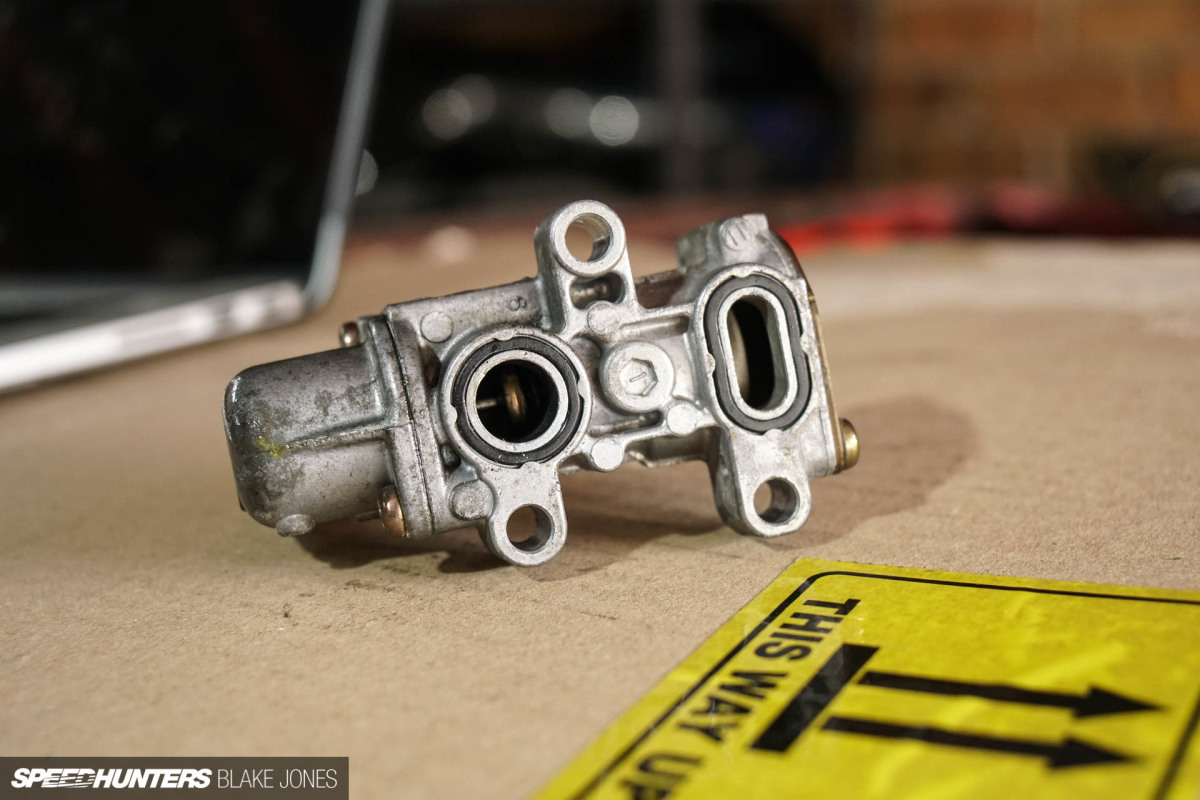
There are a few more changes on the throttle side of the equation too. A valve controlling the idle relative to coolant temperature, and the electronic air control valve (EACV) can be deleted as the electronic throttle can now perform those roles.
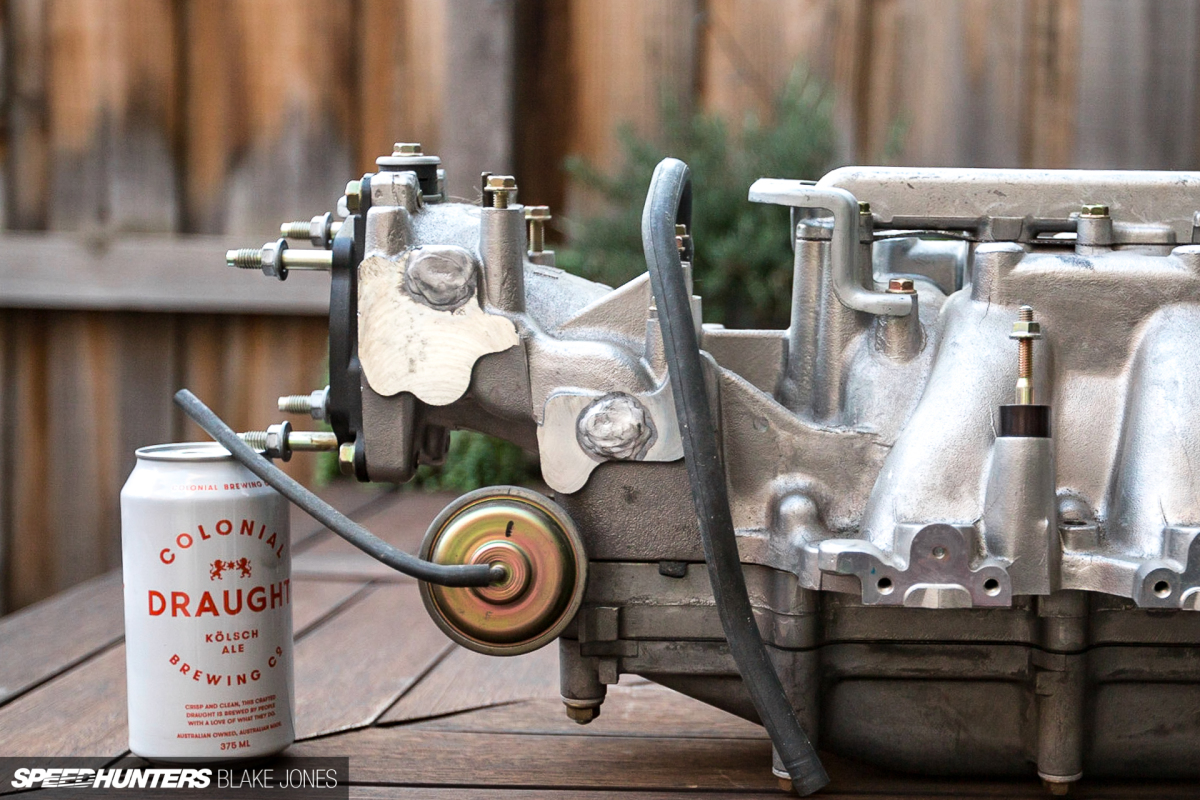
The factory’s solution for the drive-by-wire NA2 was simple – weld the unused ports up! Reference my spare NA2 manifold pictured here.
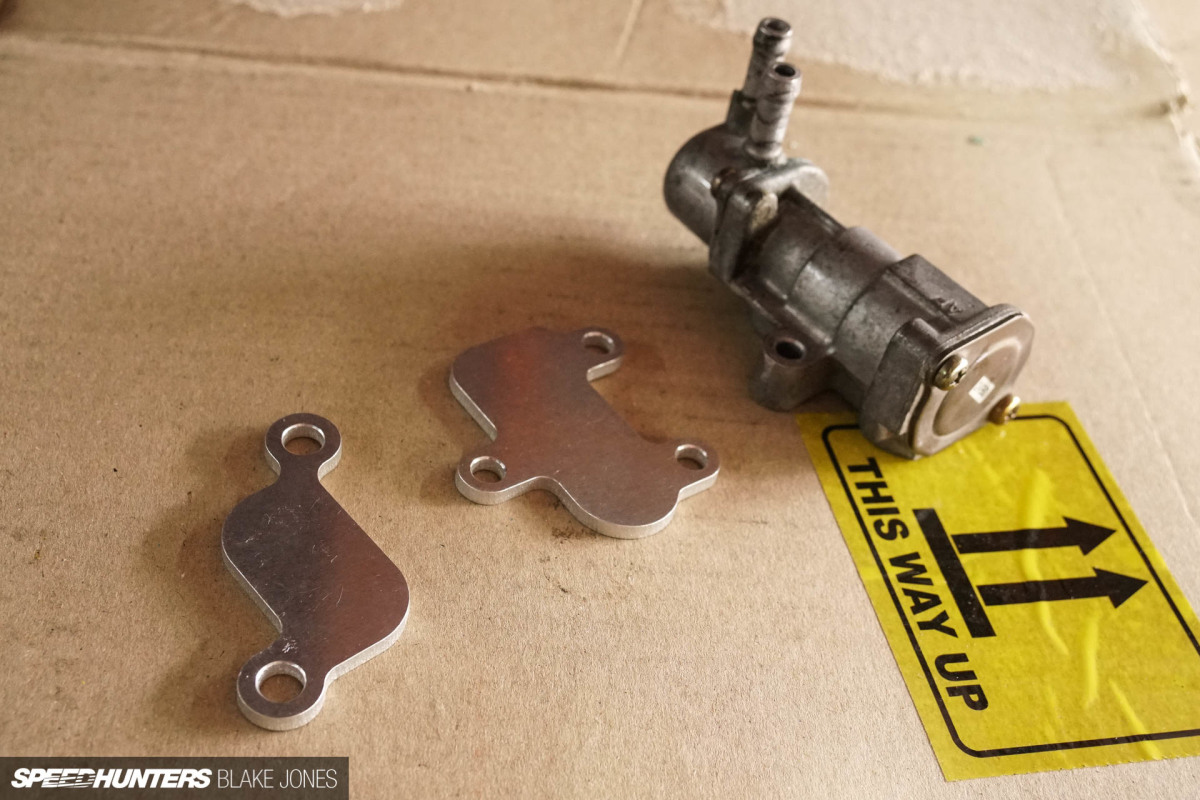
Since I’m not yet a talented aluminium welder, my solution was to have some blanking plates laser-cut for the two holes. I rerouted the coolant lines to suit. If the car ever needs to go back to cable throttle, at least this part of it will be easily reversed.
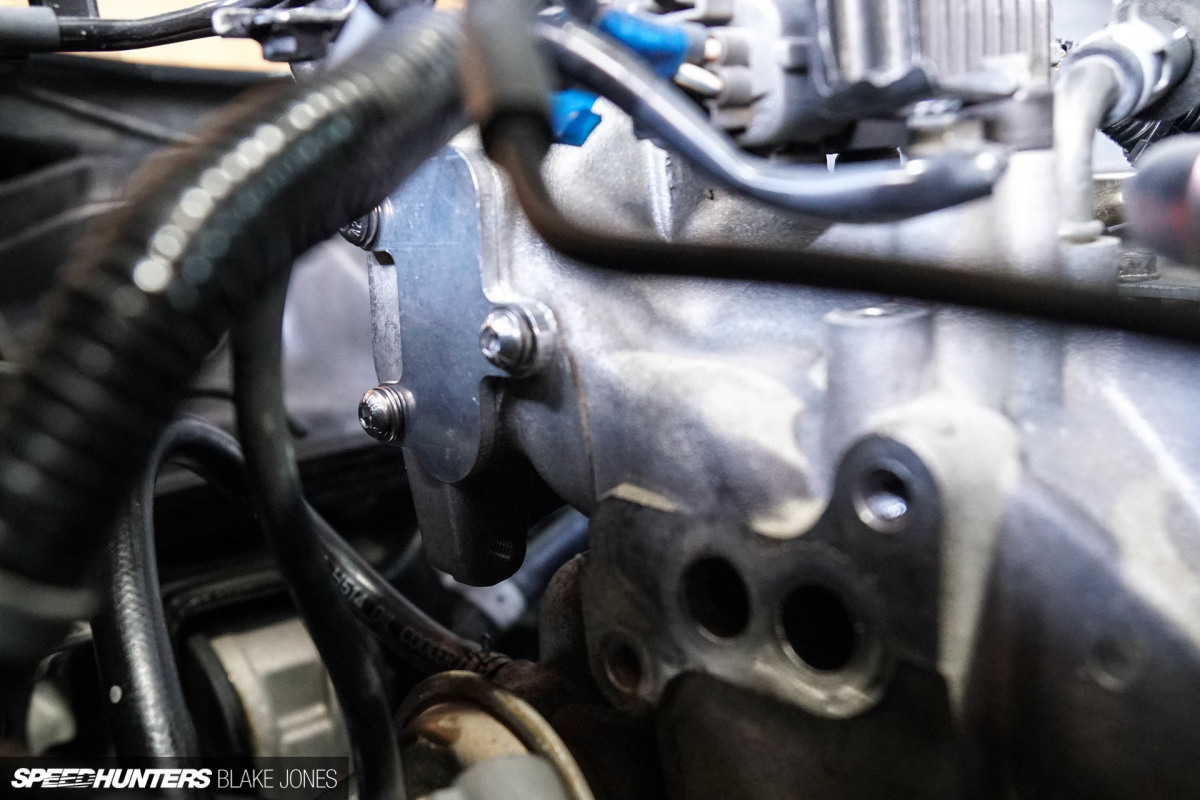
I stuffed my lens into the engine bay to show one of the blanking plates in place.
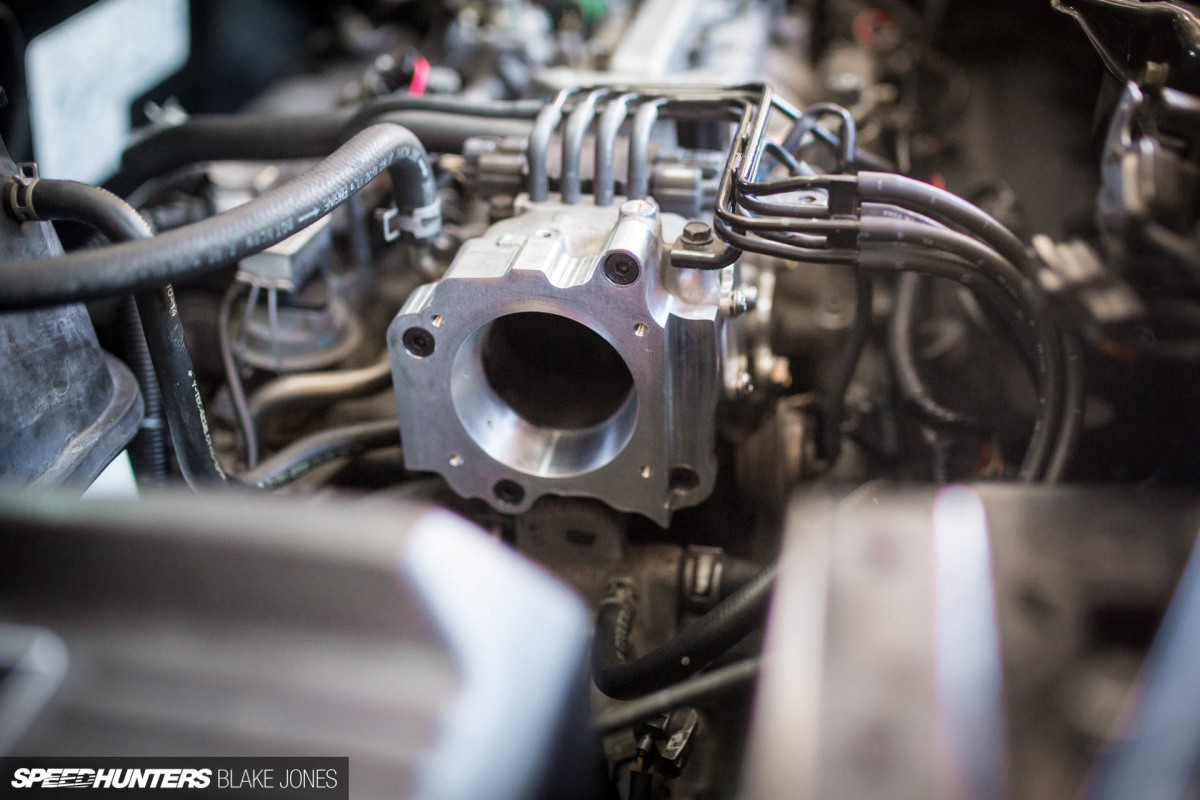
Thanks to Carl’s adapter, the throttle body bolted right up to the manifold, no clearancing or other work was required.
In turn, the electronic throttle body bolted straight up to the adapter. I should also mention this is now a 75mm diameter throttle plate in the electronic throttle body, a decent increase over the 63mm factory throttle body. I’m not intending for this to be a power mod, but with the increased demand for airflow from the tweaked engine (with its cams, injectors, exhaust etc.) it should at least remove any concern that the throttle body is a restriction, as the standard throttle body is the narrowest point in the intake system upstream of the intake ports.
The final piece of the puzzle was a 3D-printed adapter tube clamped with silicone hose to adapt the new throttle body inlet to the factory air box. These before/after photos hopefully give an idea of how much more simple the intake side of the engine bay is now. Usually I’d tell you exactly how much weight was saved at this point, but I must admit to neglecting to weigh all the old and new components during this long process. Considering the removal of the cruise control components, idle valves and throttle cable, I’d conservatively estimate 2kg (4.4lb) removed.
Calibration of the new throttle was super-easy in the Haltech NSP software. I had mixed up two wires to the pedal position sensor which was throwing an initial error, but that was a straightforward fix and we were up and running. The engine cranked and idled first time, and I used the first few drives to adjust the APP/TPS curve to my liking. A completely linear relationship made for a very sensitive throttle at low throttle openings, so the final curve ended up looking like this. It feels great, but I will probably continue to tweak this relationship to perfection as the OEM cable throttle was a high benchmark.
Meanwhile, the exhaust side of the engine was also getting some attention. “Give me some attention,” says pup, “I’m noisier than that exhaust.”
Despite appearances this isn’t a new manifold – it is the same Fujitsubo exhaust I fitted back in 2018. However, it now has a layer of ceramic coating both inside and out. I had been hearing positive results from friends who had had their exhausts coated to reduce under-hood temperatures, even being able to place their bare hand on the coated turbo housing at idle. Due to the layout of the NSX engine bay (with the two manifolds effectively wrapped around the base of the engine) they can become heat-soaked after periods of hard driving, especially once parked.
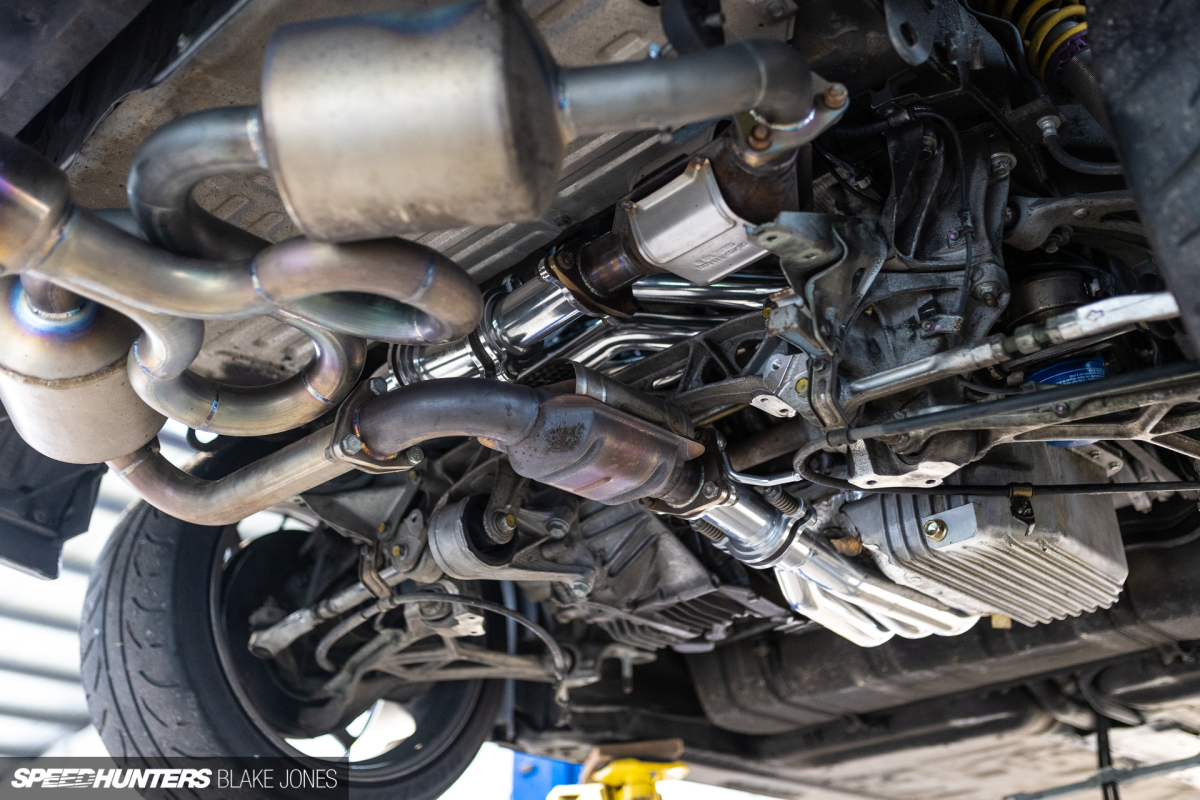
It’s a bit of extra insurance for those summer track days and will help extend the life of all the ageing plastics and rubber components in the engine bay. In theory, there will be an improvement to exhaust efficiency as well, since heat is better retained in the exhaust gasses (as opposed to radiating out from the pipes), exhaust velocity will be higher and will promote better scavenging of the cylinders during the exhaust cycle. Lower intake air temps – mine could creep to an indicated 70°C (158°F) on a 40°C (104°F) day – will also keep the engine and ECU happy.
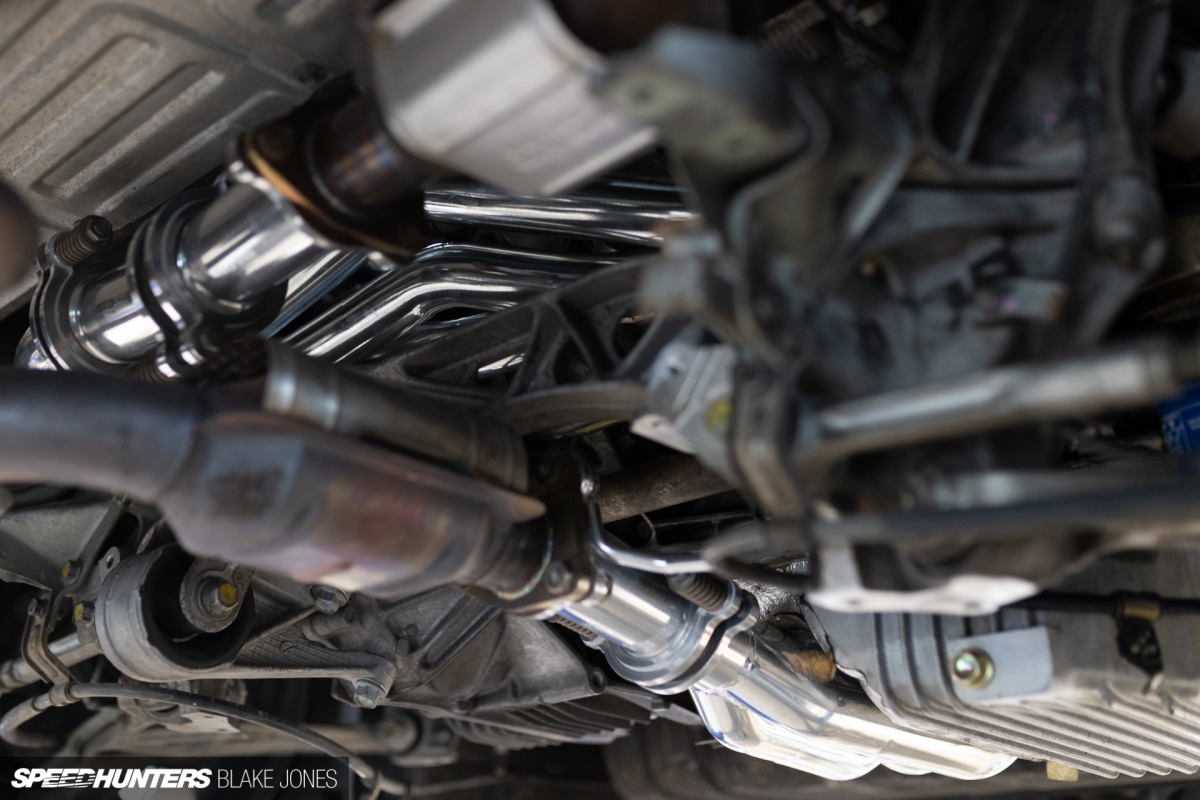
Since there’s a fair amount of bits that need to come off to get to the exhaust, some ‘while you’re in there’ jobs like replacing the AC compressor and resealing the aftermarket sump (again…) were tackled at the same time.
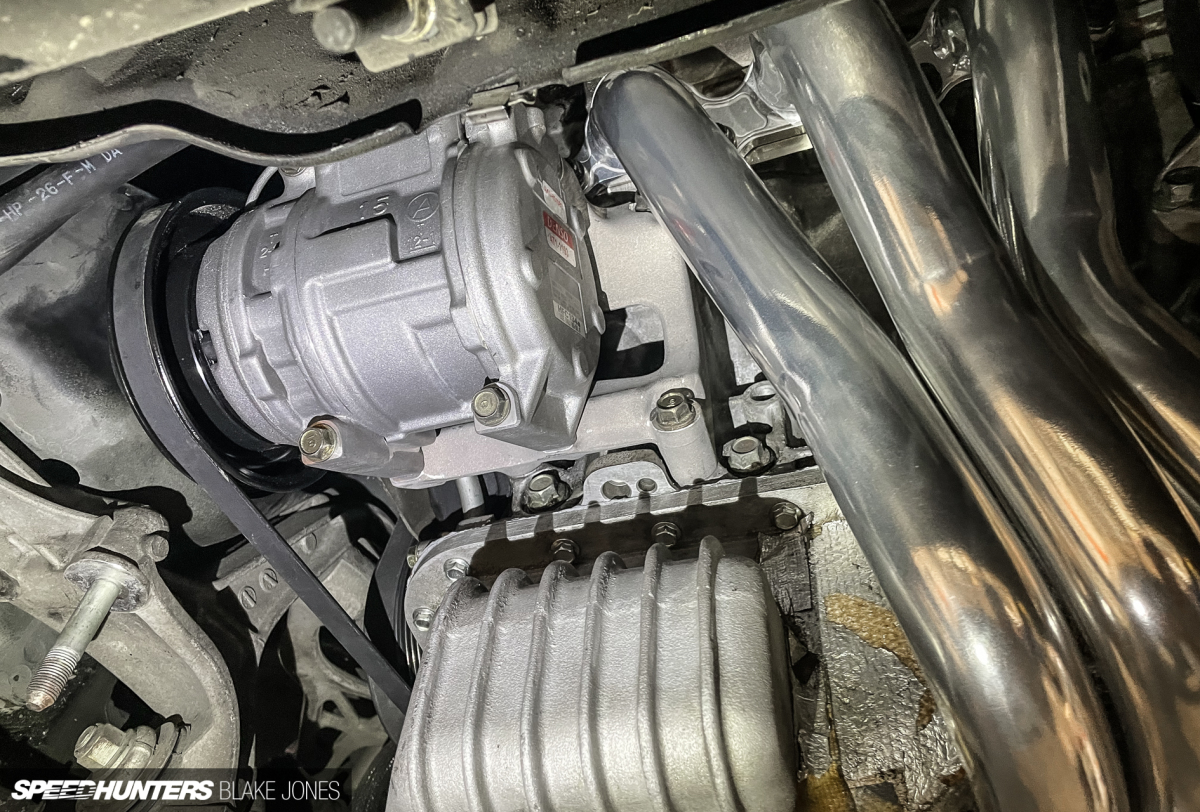
This iPhone photo is just for the NSX nerds, showing the new AC compressor clearance to the headers. This gap is usually almost non-existent, which leads to heat-related compressor death. The combination of a redesigned bracket from the later NSX and millimetre-perfect fitment of the Fujitsubo manifold has created a nice air gap which should give my fresh compressor a long and healthy lifespan.
Front-End Fun
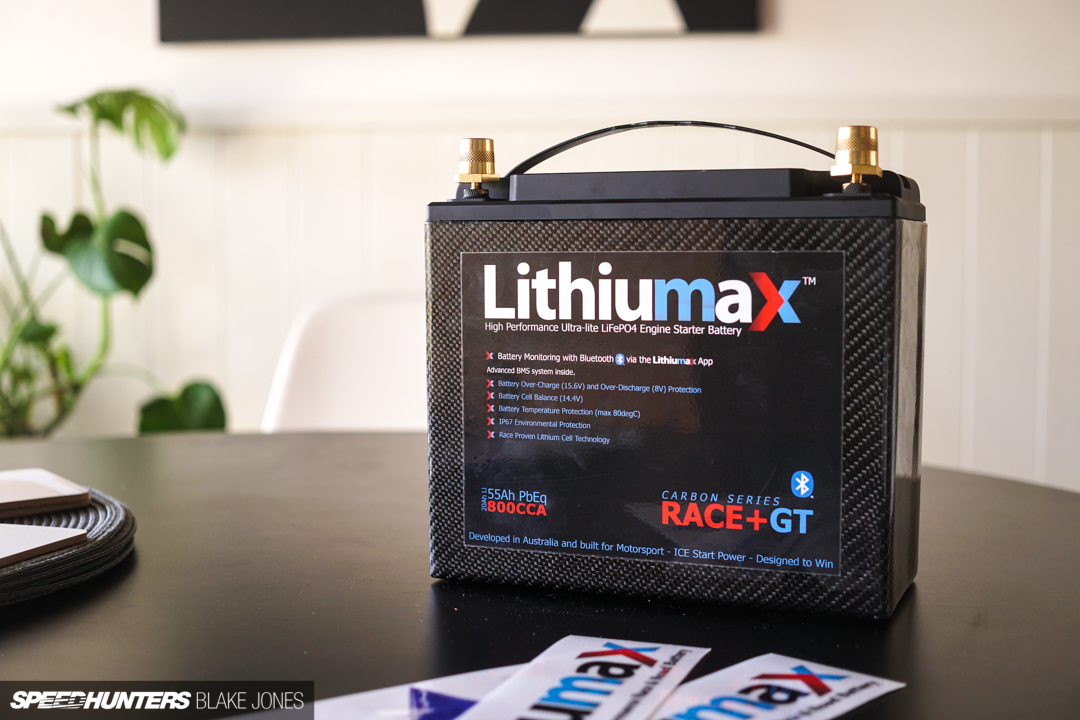
Broadly speaking, battery technology has been advancing rapidly in recent history. The multi-trillion dollar industry for mobile devices and wearables depends on significantly improved battery life to sell devices, and electric vehicles have effectively turned the early concerns about range and performance on their heads. This is thanks to both improved cell materials and design, and smarter management systems to optimise the charge, discharge and operating parameters of the battery. Lithiumax is an Australian company who has been bringing that technology to enthusiasts in their range of lithium-based car batteries.
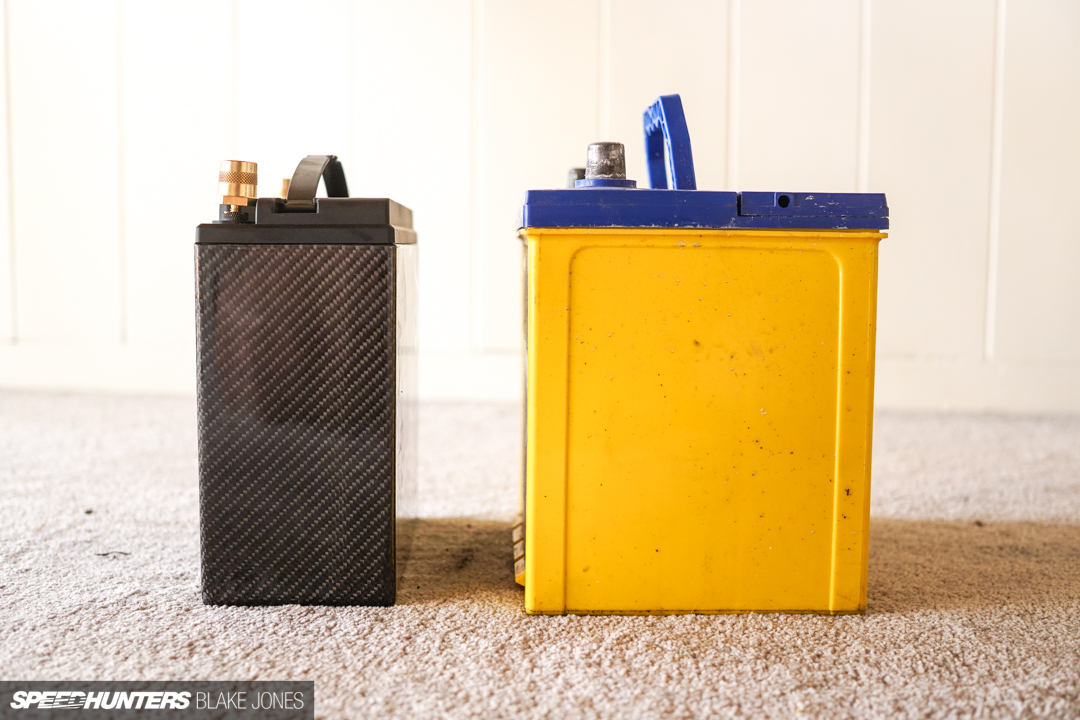
It almost seems ridiculous to still use a lead-acid battery once you realise how far things have come. There is still one compelling reason for the classic automotive battery – cost – but I can imagine this gap will be closed over the coming years as the technology matures.
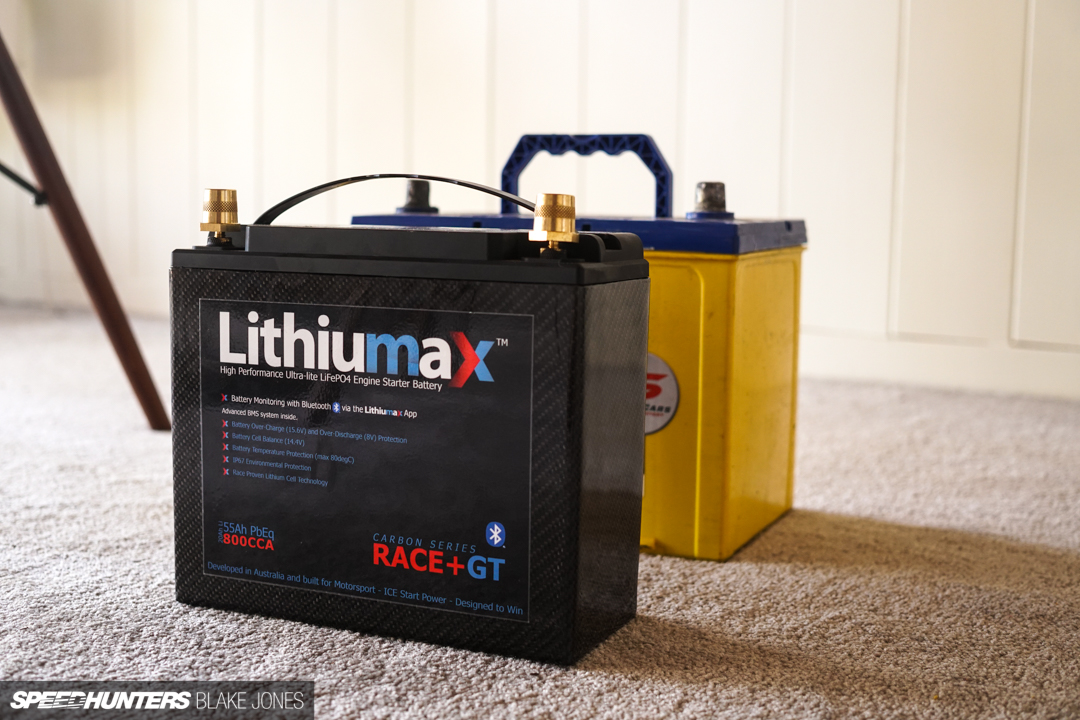
I opted for the Carbon Series RACE+GT, which offers 800CCA (cold cranking amps) and 55Ah (amp hours). This is not like the traditional ‘lightweight starter battery’ you will remember from race cars of years past. There are no compromises compared to the standard battery; I can run accessories with the engine off and do not need to stress about the battery dying after short periods parked. The Lithiumax will also deliver a more stable voltage, meaning a happier ECU and other electronics. Conveniently, the height of the new battery is very similar to the old, so mounting in the stock location would not require any changes to the terminal leads, which makes things easier.
A quick check with my toolbox scales confirmed the very obvious – the carbon-shelled Lithiumax battery weighs 84% less than the lead acid battery I was removing. I simply cannot think of where else in a car 16kg+ (35lb+) of weight can be saved without any compromises. Except my own waistline, perhaps.
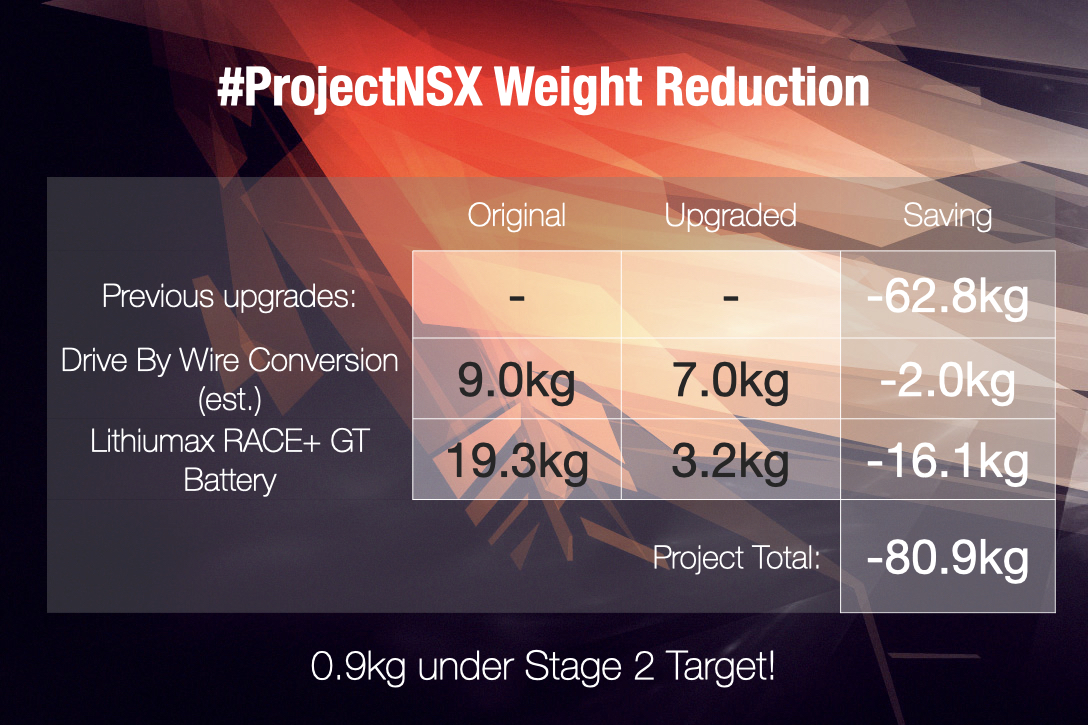
Those who have been following this project for a while would know that one end goal is to achieve a target power-to-weight ratio of 261hp per metric tonne, that of the Porsche 996 GT3. Making NA power is neither cheap nor easy and I refuse to strip the car at the expense of reasonable comfort and NVH, and as a result progress toward has been incremental for some time. This weight saving is thus a huge leap forward. In fact, it’s enough to push Project NSX under the ‘Stage Two’ target of 80kg (176lb) weight reduction.
I used the ‘standard’ brass terminals included, but these can be replaced to suit install requirements. As is becoming the norm for these high-tech lithium batteries, a Bluetooth app allows you to monitor voltage, current draw, battery temperature and remaining capacity.
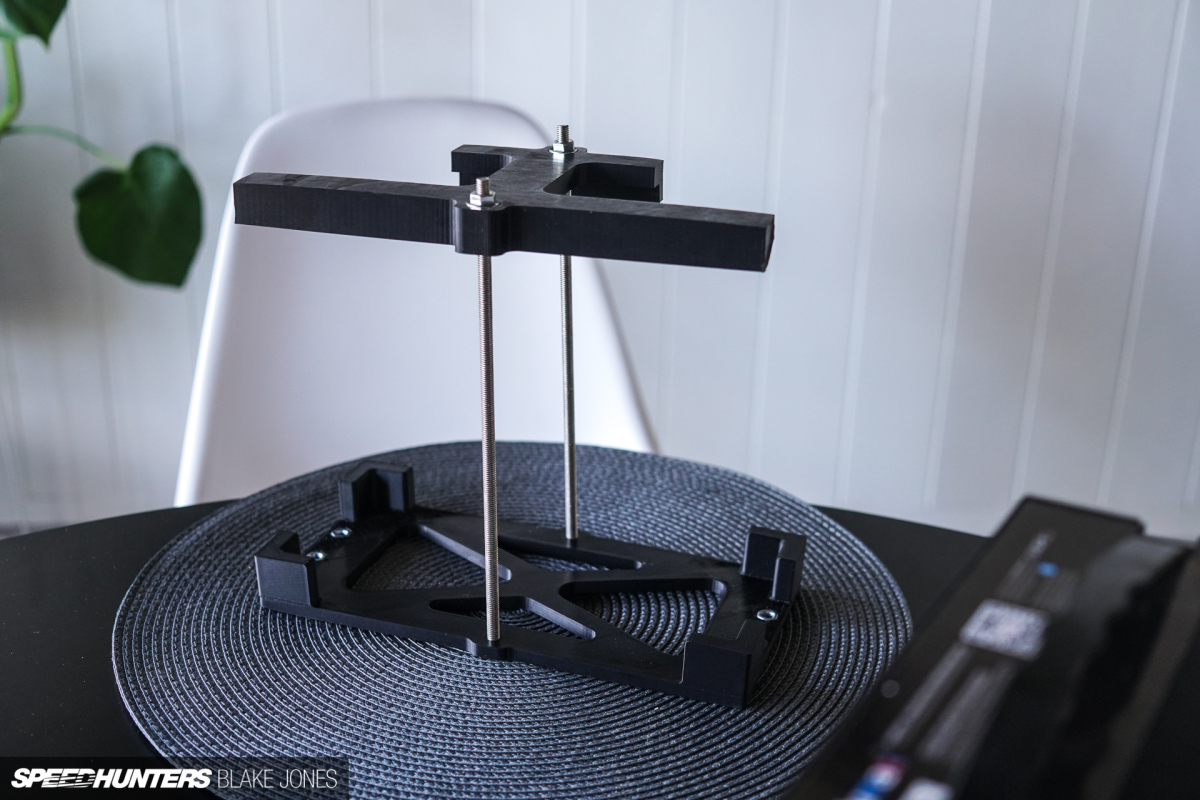
The stock battery mount would not accept such a reduction in width of the battery. I measured up the Lithiumax and designed a simple mount in CAD utilising some high-tensile threaded rod to clamp the upper and lower sections together.
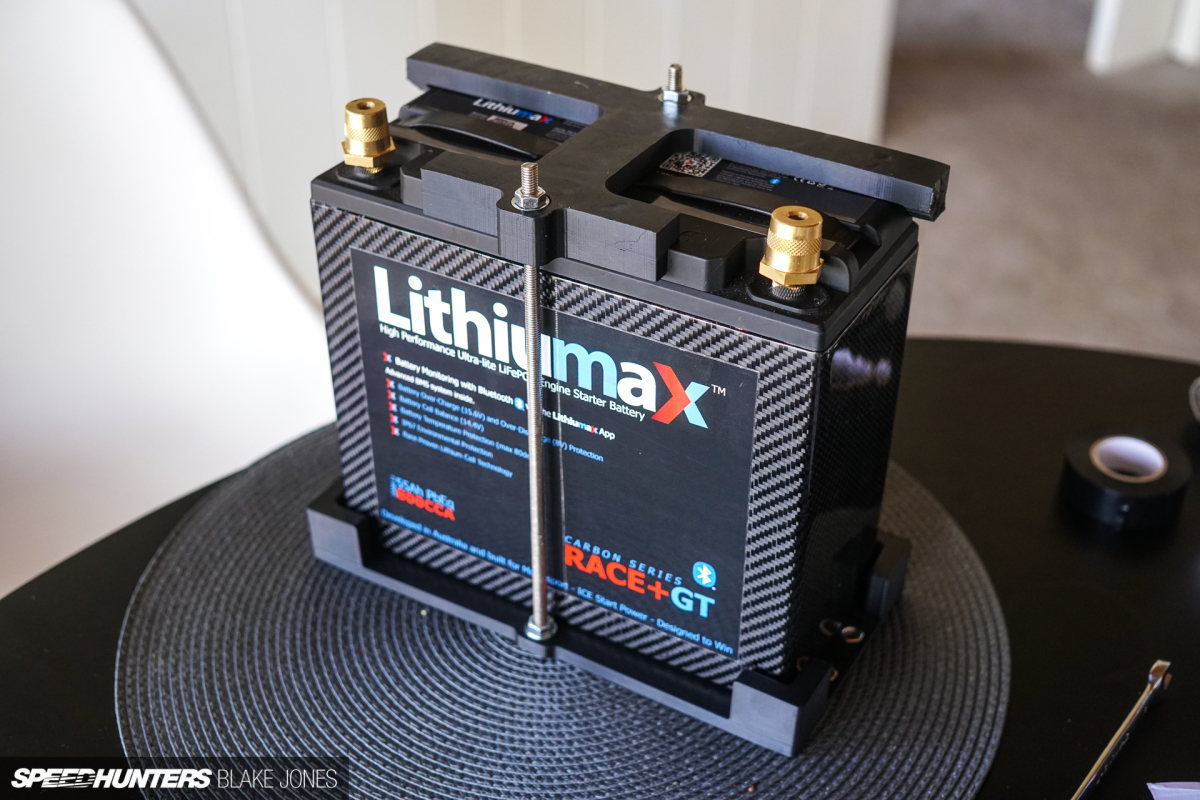
This version one is 3D-printed in ASA, but after verifying fitment and making some small tweaks, the final version will be printed in a new carbon fibre-infused filament which boasts the highest strength and temperature durability yet for a consumer-grade printer like my Prusa i3 MK3S. For extra security, I embedded a thin aluminium plate in the top section, linking the two rods.
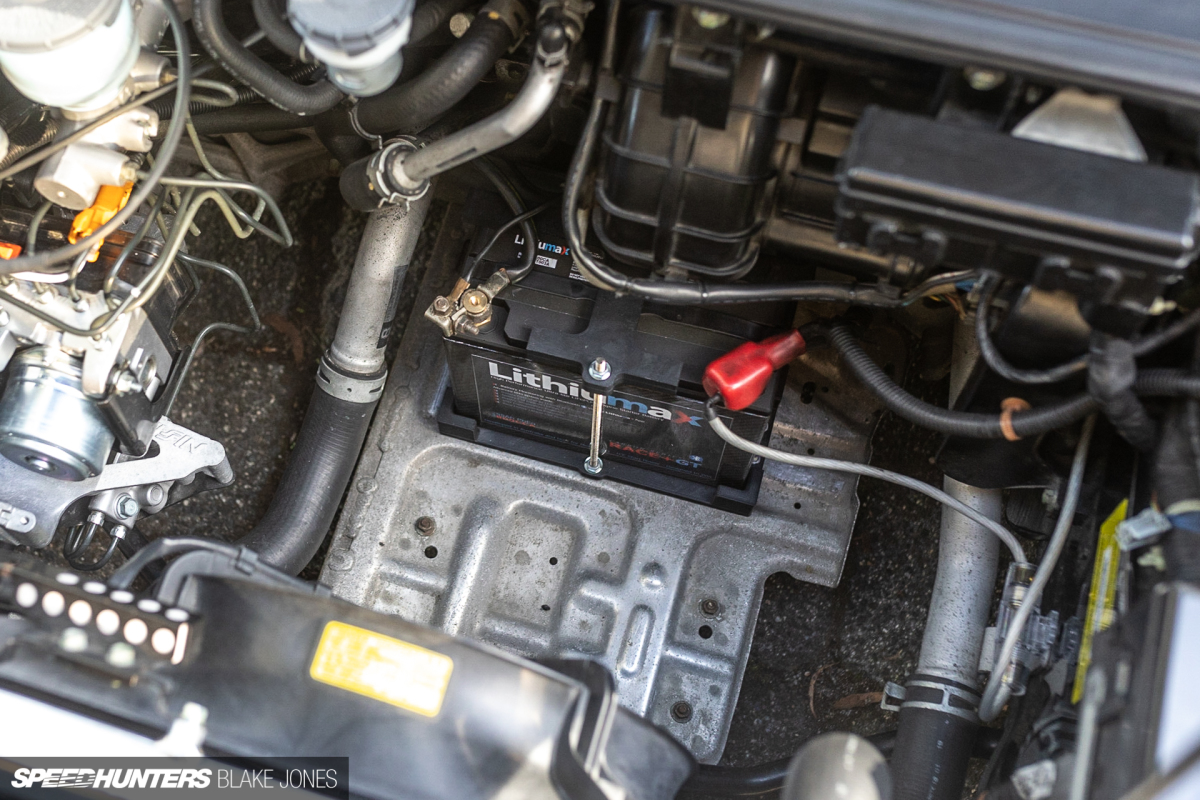
Here it is looking at home on the aluminium battery tray in the front of the car. Which leads us to…
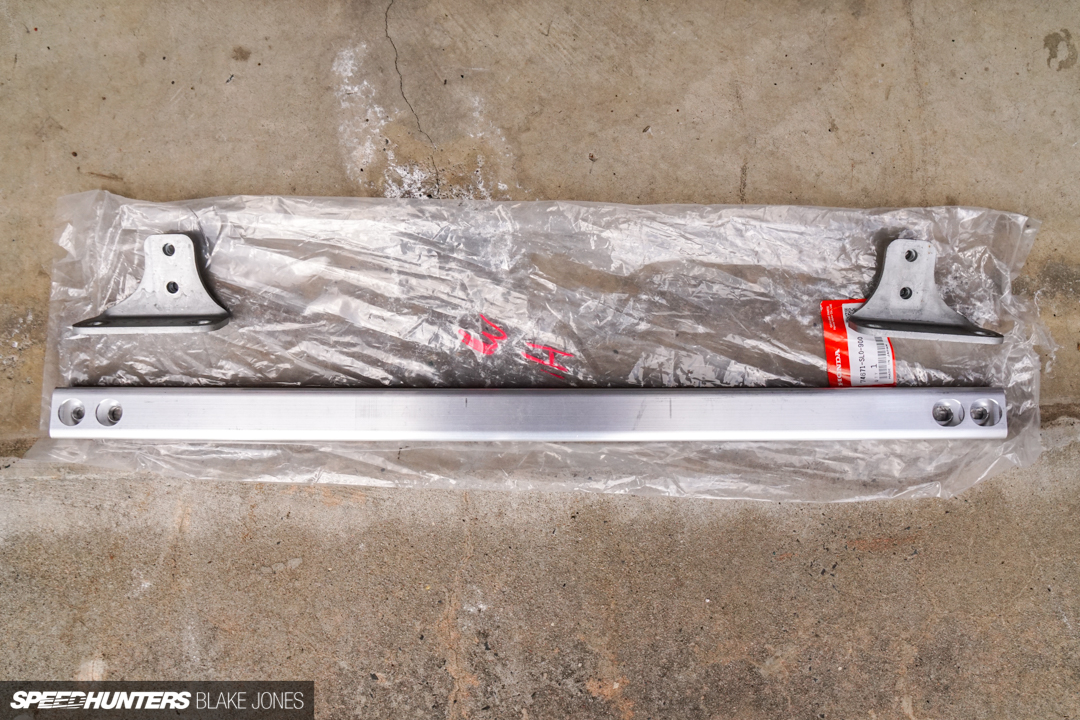
Are you sick of the tax on performance parts from Nismo, Mugen, Honda and so on? Well, here’s a genuine bit of NSX-R kit that is not only affordable, but is probably available on a shelf at your local hardware store. This is the upper of two braces that Honda added to the front of its flagship sports car to increase rigidity.
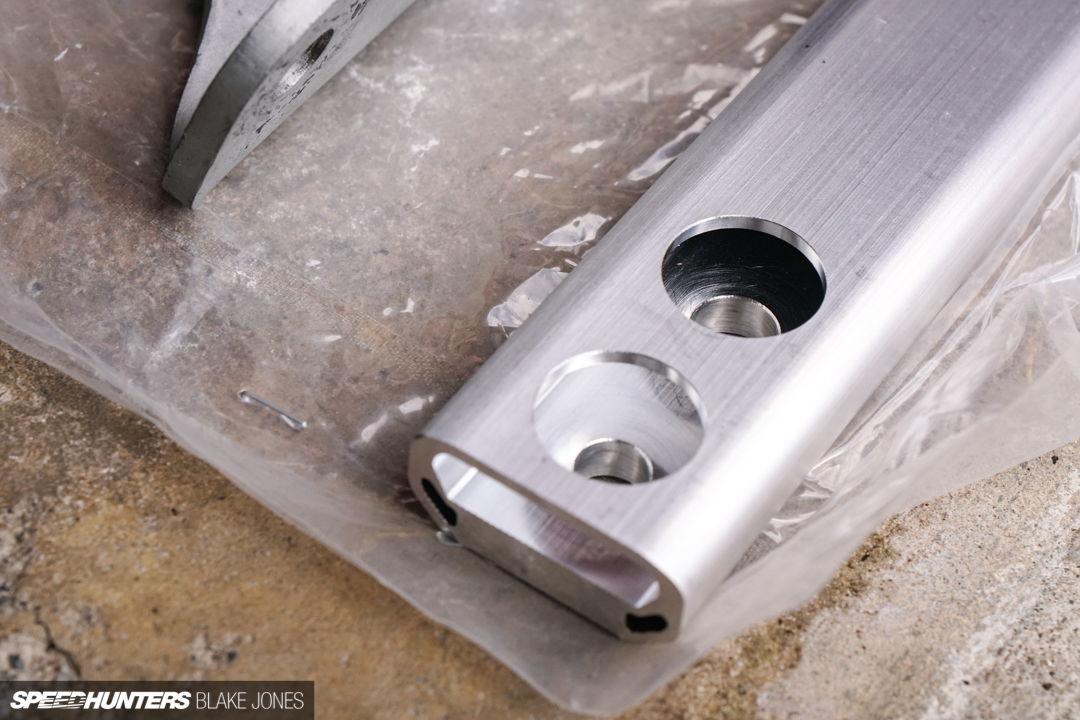
On closer inspection, there’s quite a bit of detail in the extrusion and machining, so perhaps I shouldn’t judge Honda too harshly. My car had been fitted with the lower brace by the previous owner – a 10-minute job with easy access from underneath.
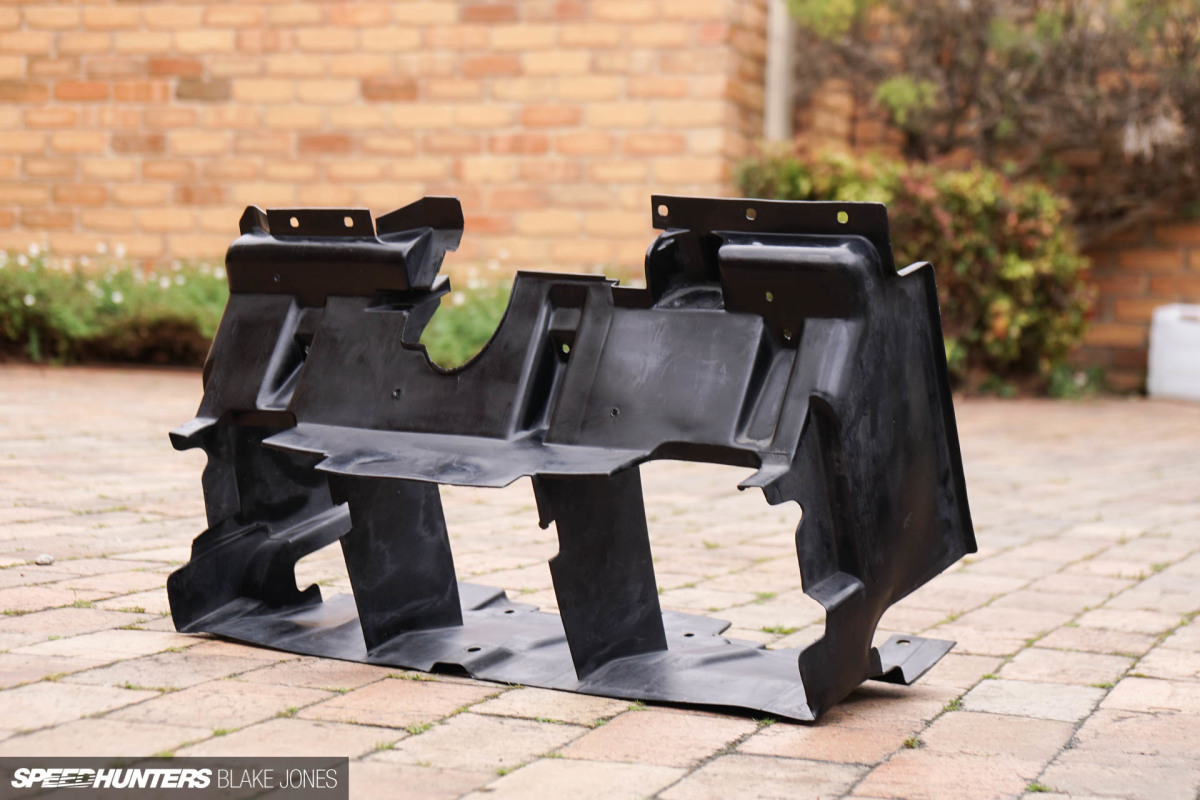
The upper bar installation is only complicated by this large air guide which sits inside the bumper and helps seal the radiator. The obvious way to remove the large piece of plastic would be to take the front bumper off, but that’s a tricky job and requires a careful and tedious alignment for the refit. The other option, as approved by the forums: grab it with two hands and pull. Hard. It took a bit more aggression than I’d have liked, but hey, it’s still better than trying to refit a bumper by myself. While it was out, it was a good time to give it a wash to clear off 30-plus years of road grime and bug guts.
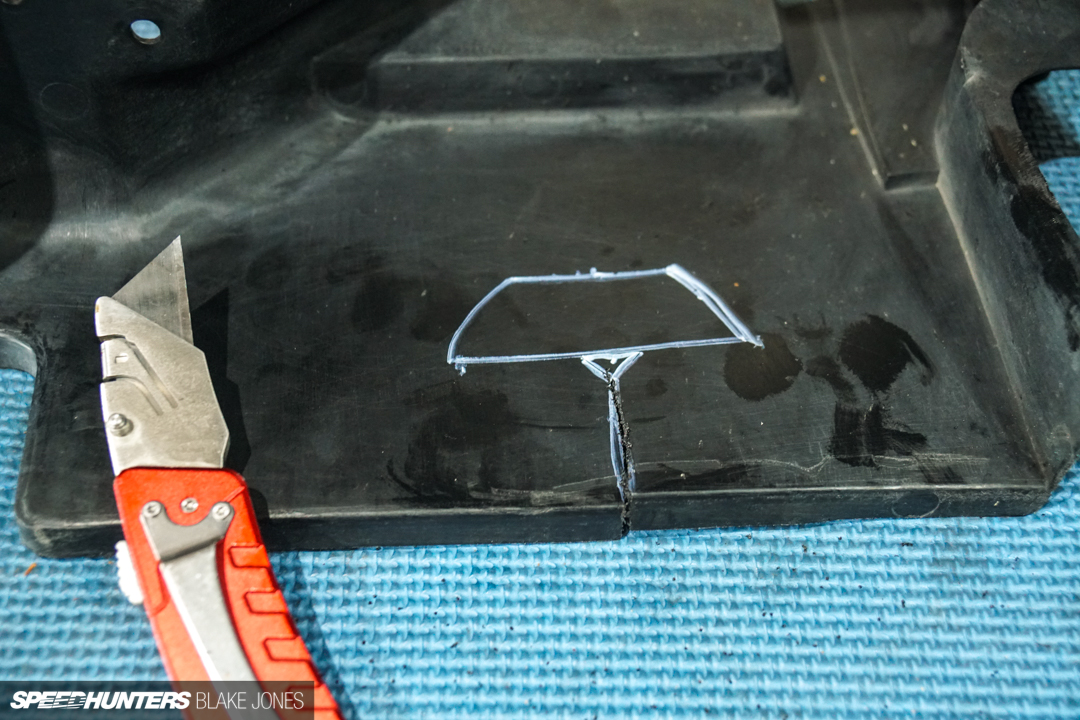
A cut is required on each side of the shroud for the bar to pass through. At some point the injection moulding was updated by the factory to include this for all NSXs, regardless of R (bar) or non-R (no bar). My 1992 model missed out, so I drew my best imitation and got cutting.
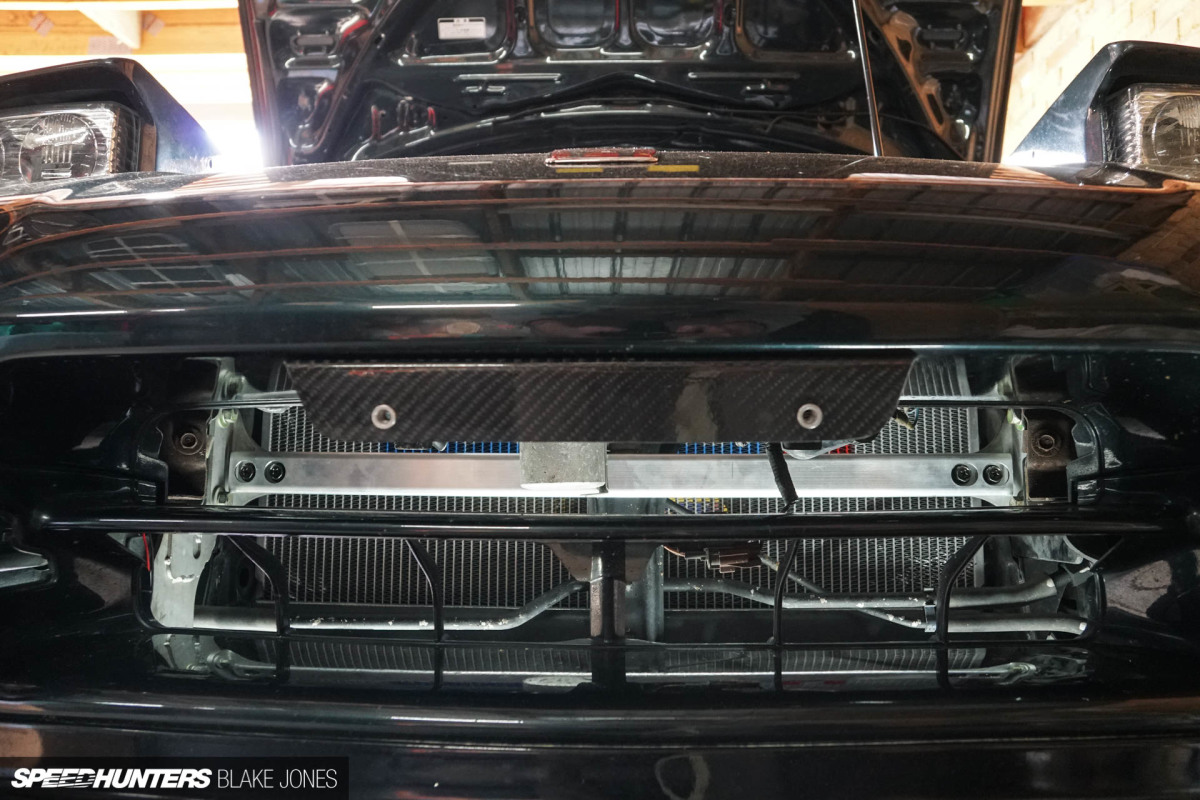
To bolt it up, one of the rather heavy tie-down points needs to be removed, so the total weight penalty is a negligible 300 grams (10.5oz).
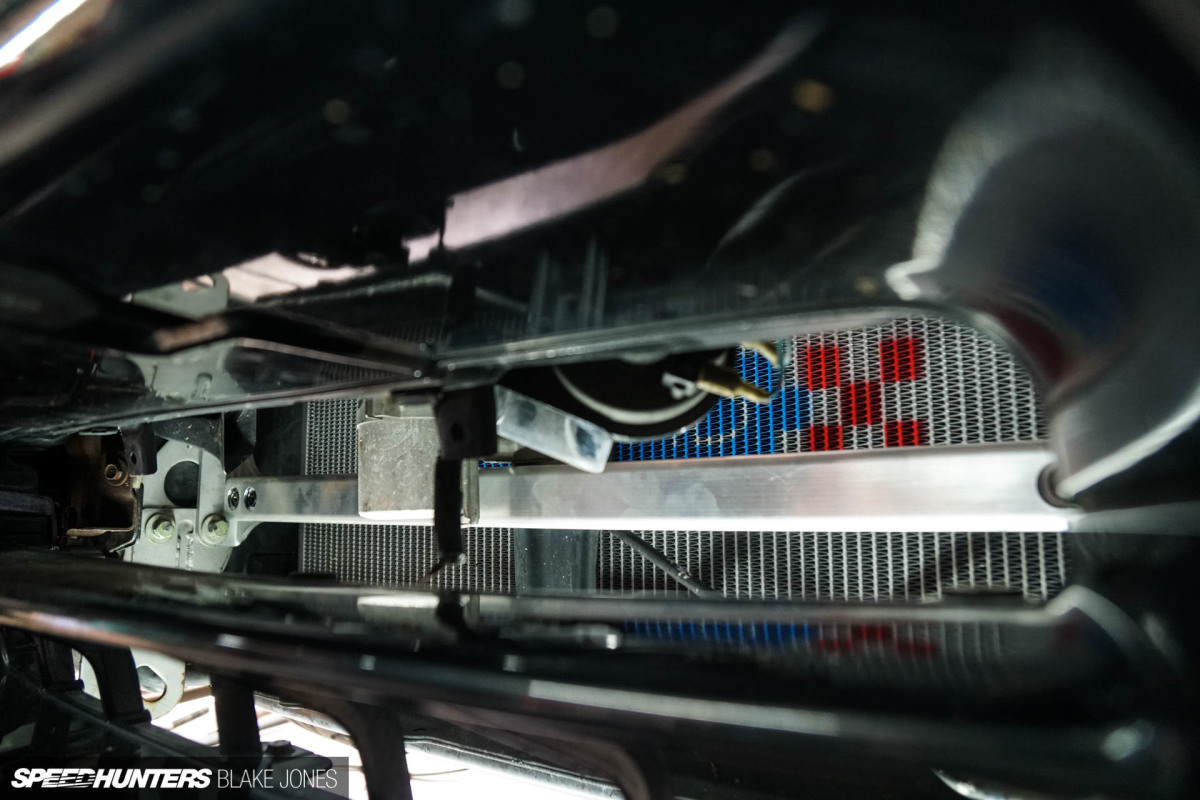
Road driving the car after the install, I could notice a very slight increase in steering feel and feedback. Perhaps the lower bar had already provided most of the additional stiffness to be found, but I don’t doubt the benefit will be more apparent on the track where the NSX-R was designed to excel.
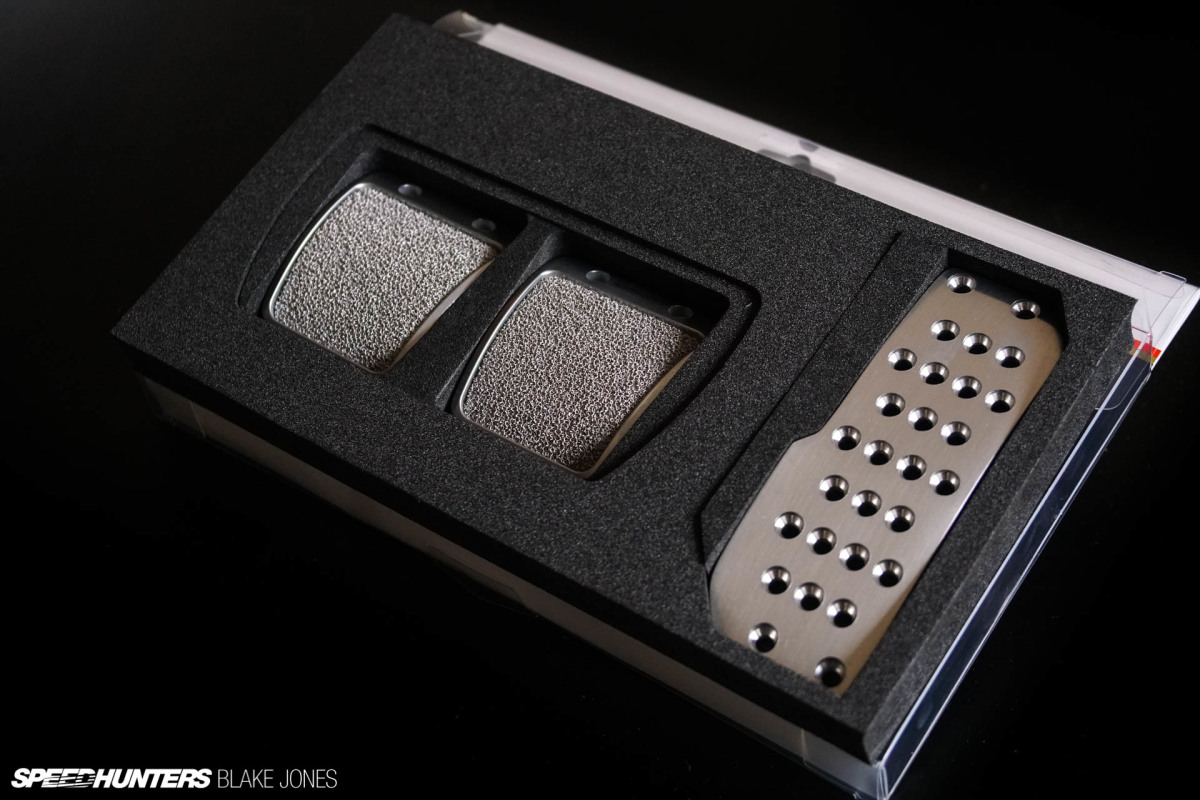
The second-hand DBW pedal I’d purchased came without a cover, so I’d hoped to transplant my standard plastic pedal cover. No luck though; it could not be removed from my pedal without destroying it. I’ve since realised my new pedal was likely bought in Type R form by a non-R owner, stripped of its pretty aluminium cover, and sold. There’s nothing wrong with that, but I needed something to replace it. Enter the Mugen Sports Pedal Kit, a universal pedal pad kit for Hondas. These are my first Mugen parts; now can I call myself a true Honda tuner?
The brake and clutch pedal are a fascinating design. The centre is made from a material unlike any I’ve seen before in the automotive world – a web of porous aluminium that reminded me of coral I’ve picked up on the beach. In theory it should provide great grip even with wet or dirty shoe soles.
The clutch and brake pedals are installed with a combination of clamping bolts and adhesive tape.
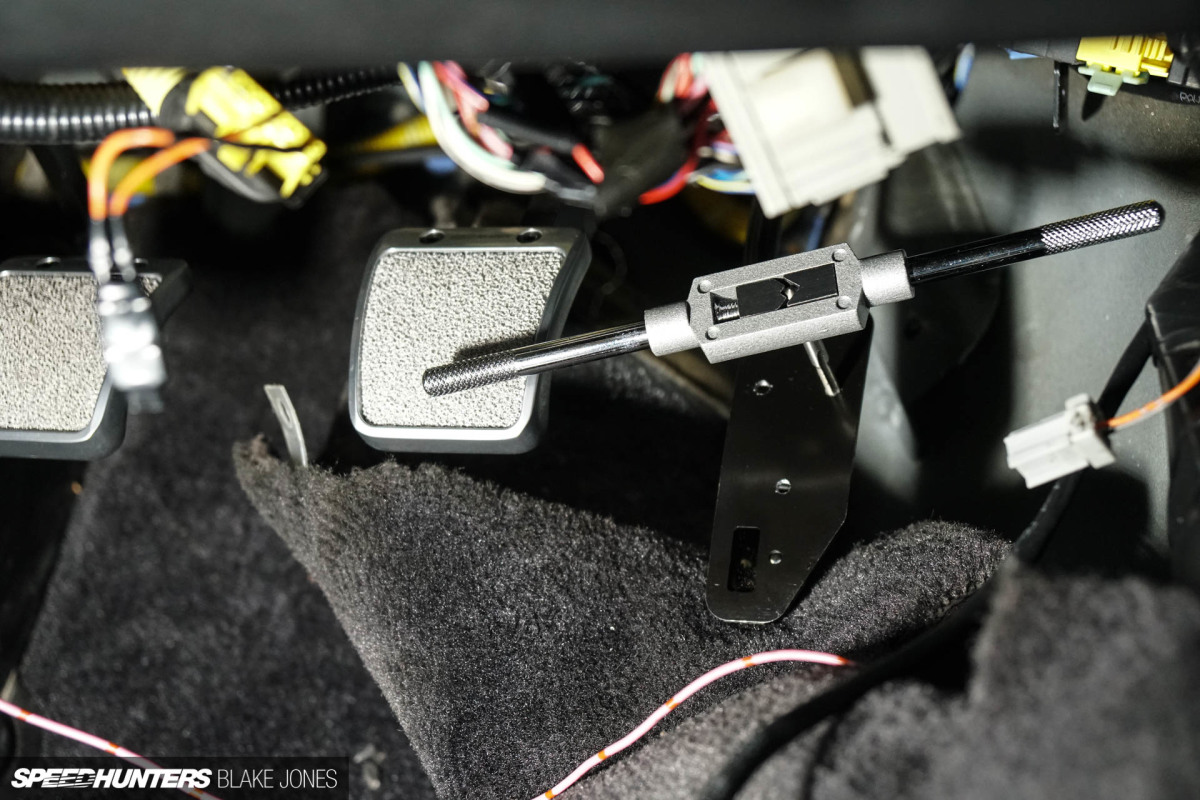
The accelerator cover attaches directly via bolts. I cut the appropriate thread into the existing holes in the pedal base, which of course lined up perfectly with the drilled holes in the cover.
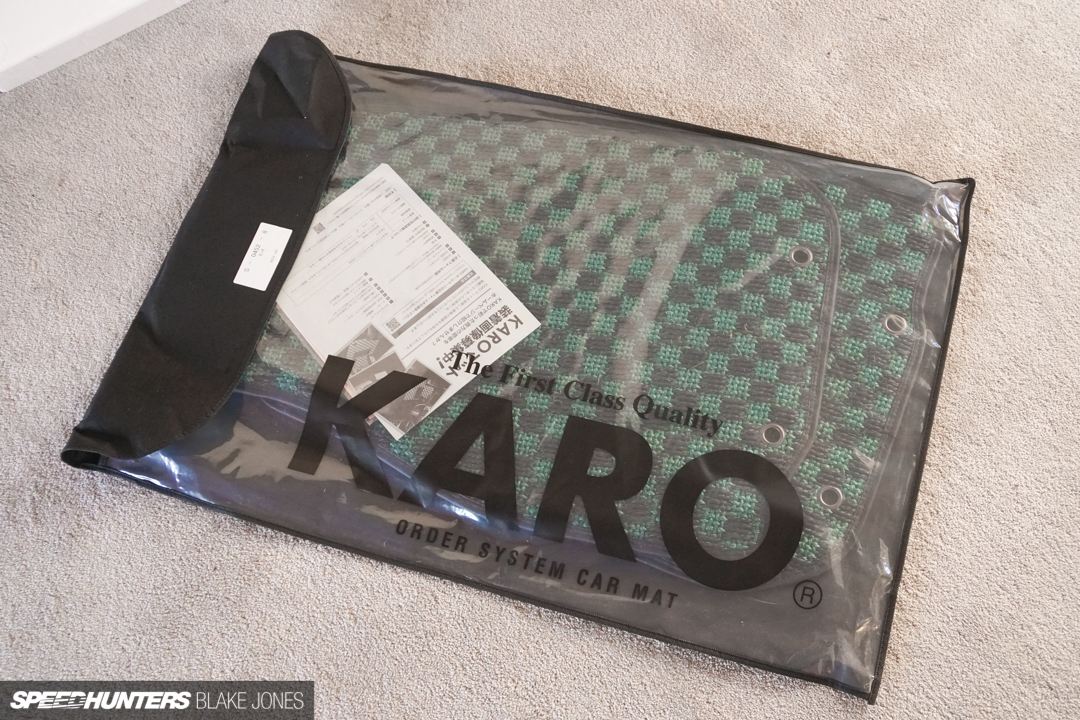
Spending so much time in the footwell brought my attention to some rather daggy floor mats. Although there was some light fraying, the sensible thing to do would be to give the mats a nice deep clean and see how they came up. Covid isolation boredom had other ideas. I was getting frustrated waiting for some other parts to arrive and needed the to hit the ‘Buy Now’ dopamine button one lonely night. We’ve all been there, right?
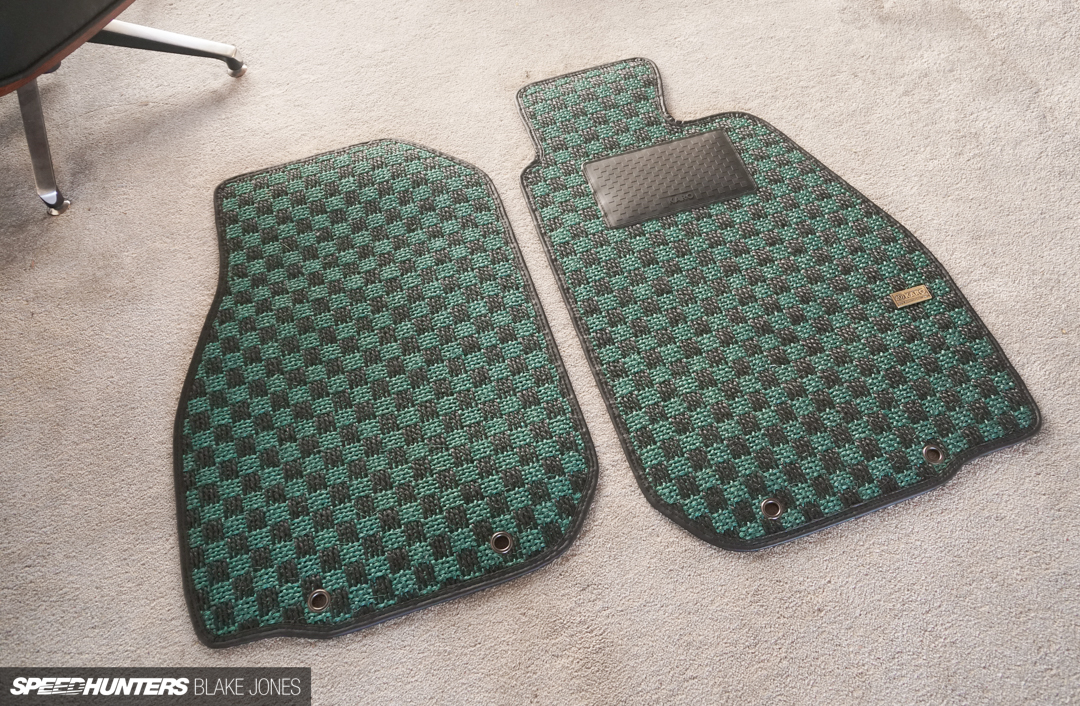
Karo is the go-to aftermarket floor mat in Japan, known for their durability and millimetre-perfect fit. The green stitching on the Cobra seats had brought a bit of colour into the monotone interior and I thought these would be a nice complement. In person the green does indeed match well. It’s a bit intense, but I hoped that in the dark footwells it wouldn’t overwhelm too much.
The chequered ‘sisal’ material is what the company is most known for after 40+ years in business. It certainly feels hard wearing. Details like the eyelets to hold the rear of the mats in place and rubber footrest are appreciated.
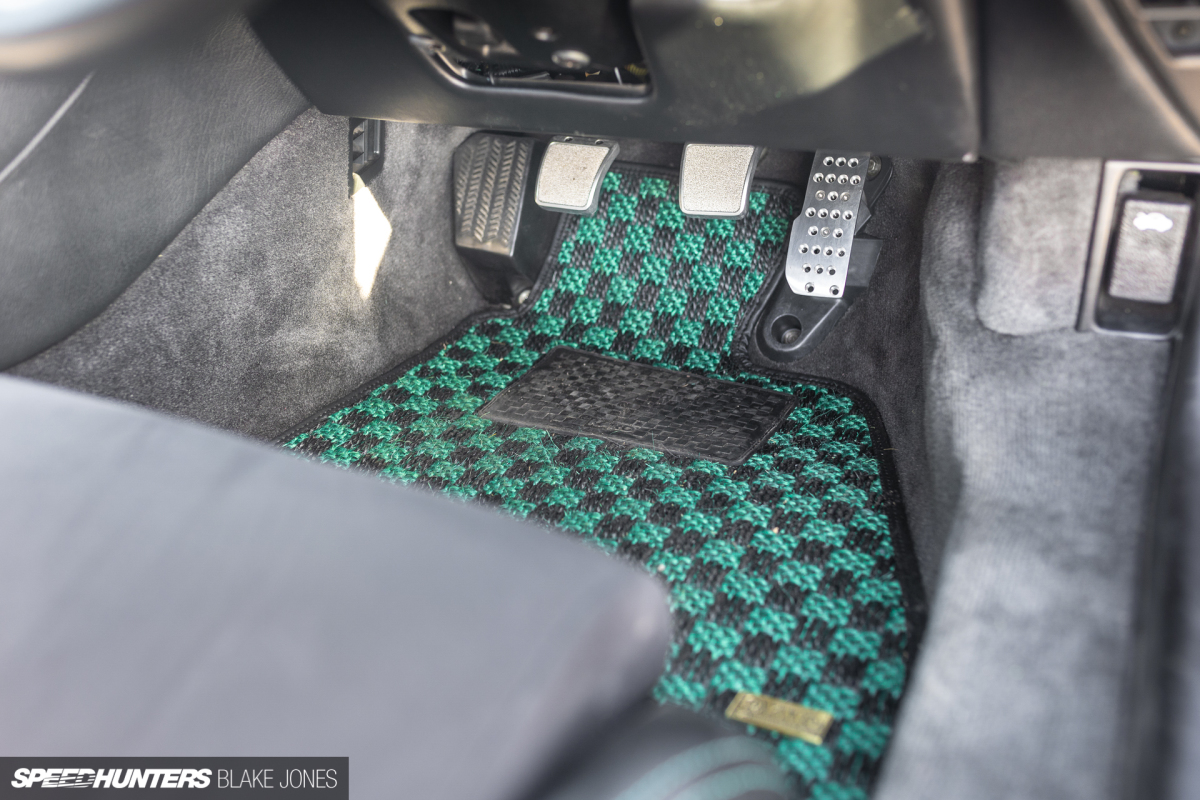
Here’s what they look like in the car, underneath the new pedals. If I’m honest, I’m not in love with the look, but will leave them in and see if it grows on me.
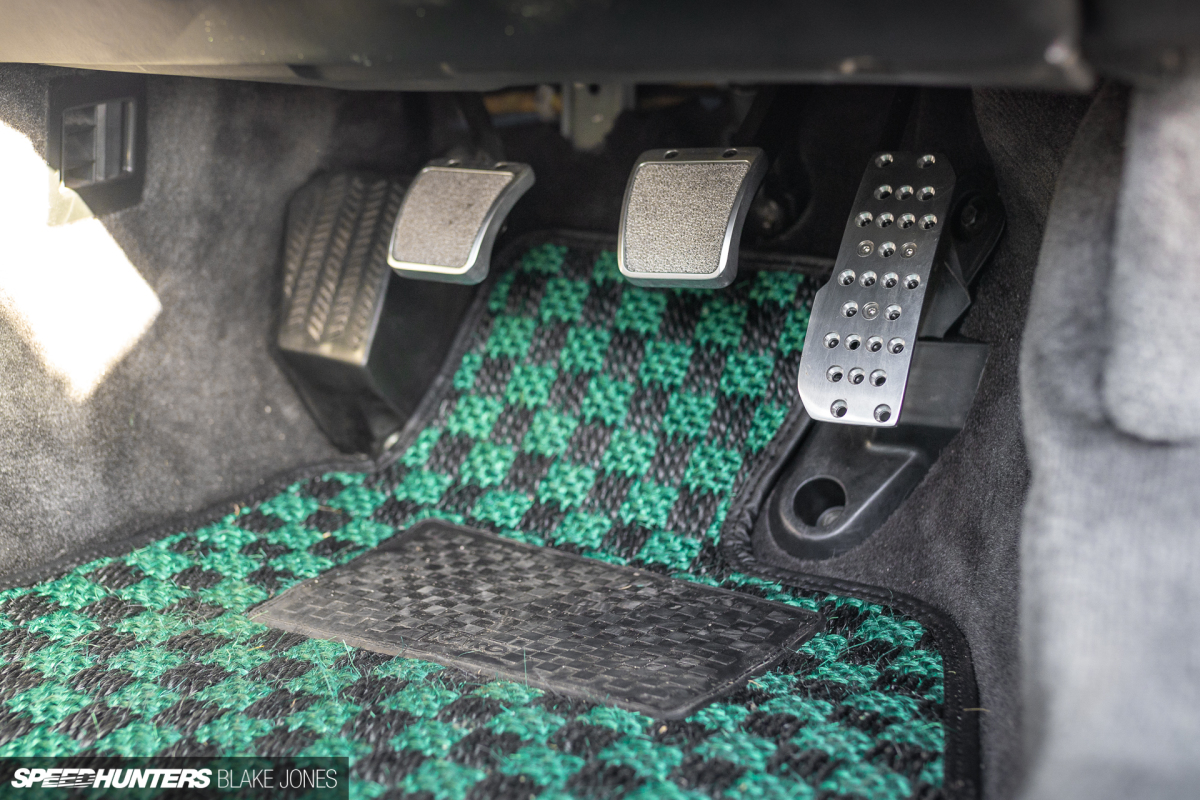
Having the ability to adjust the accelerator pedal position is a nice benefit though. Let me know your thoughts on the combo!
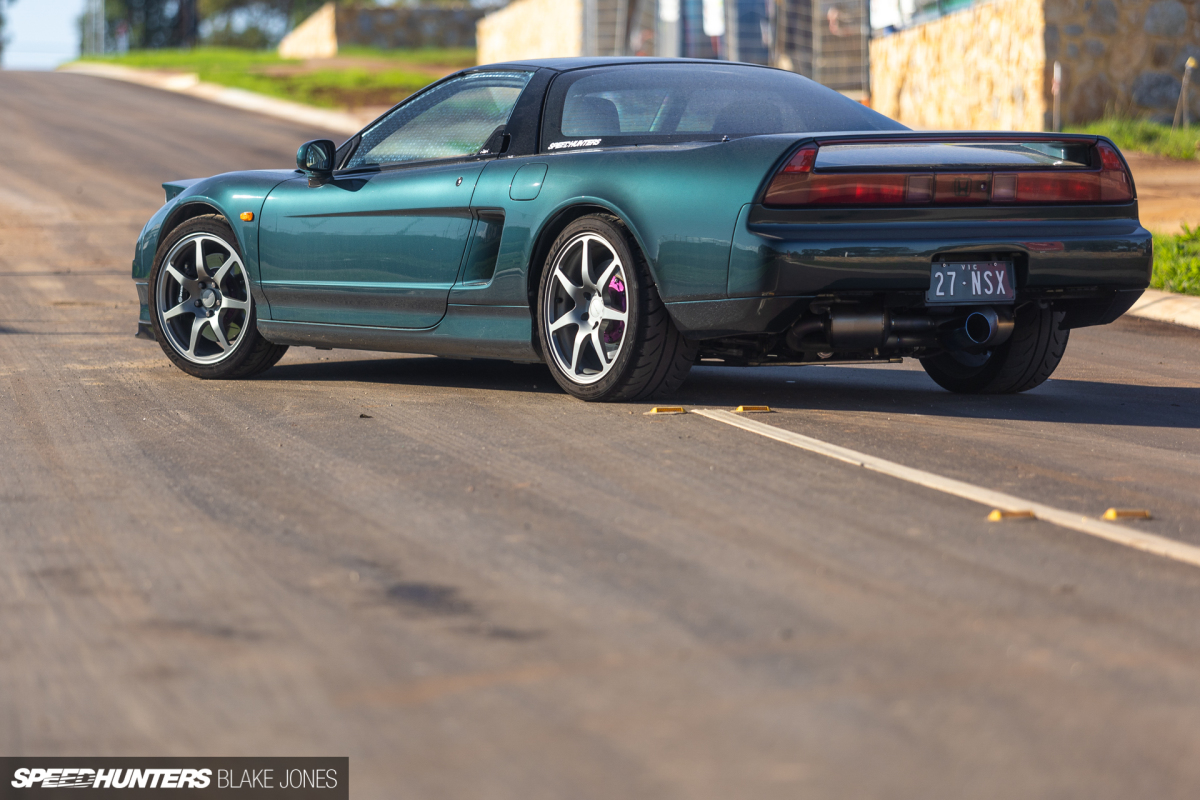
Those other parts leading to my frustrated floor mat frivolity have still not arrived, having being caught up in the insanity that is global shipping schedules post-Covid. Word is that they are close, and I look forward to sharing those updates with you soon. Project NSX might finally be getting a new look…
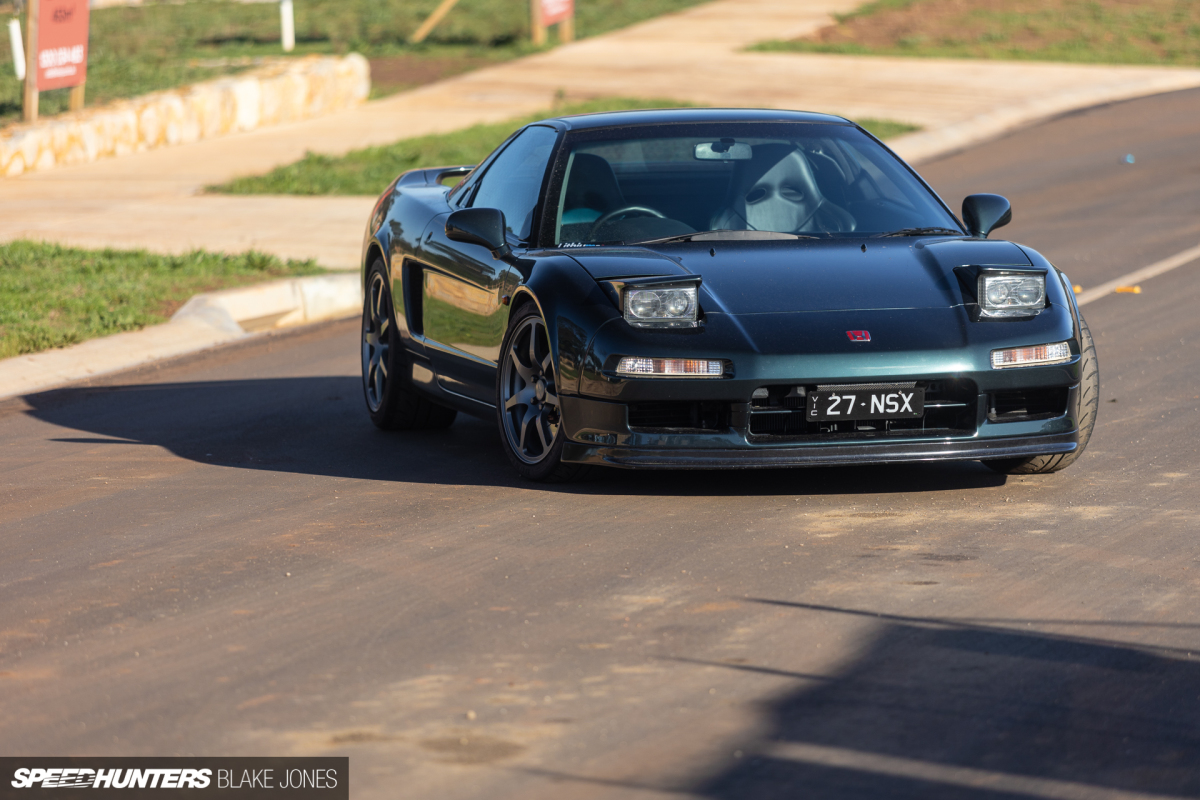
I’ve also been fortunate to meet some individuals who are taking their own builds to a level of refinement that I’d previously thought impossible outside of the factory, which has been providing some inspiration for the next round of improvements. It does feel a bit like the more I know about these cars, the further away I realise I am from the end goal. But I’m here for the journey, and that process is where a lot of the enjoyment is found.
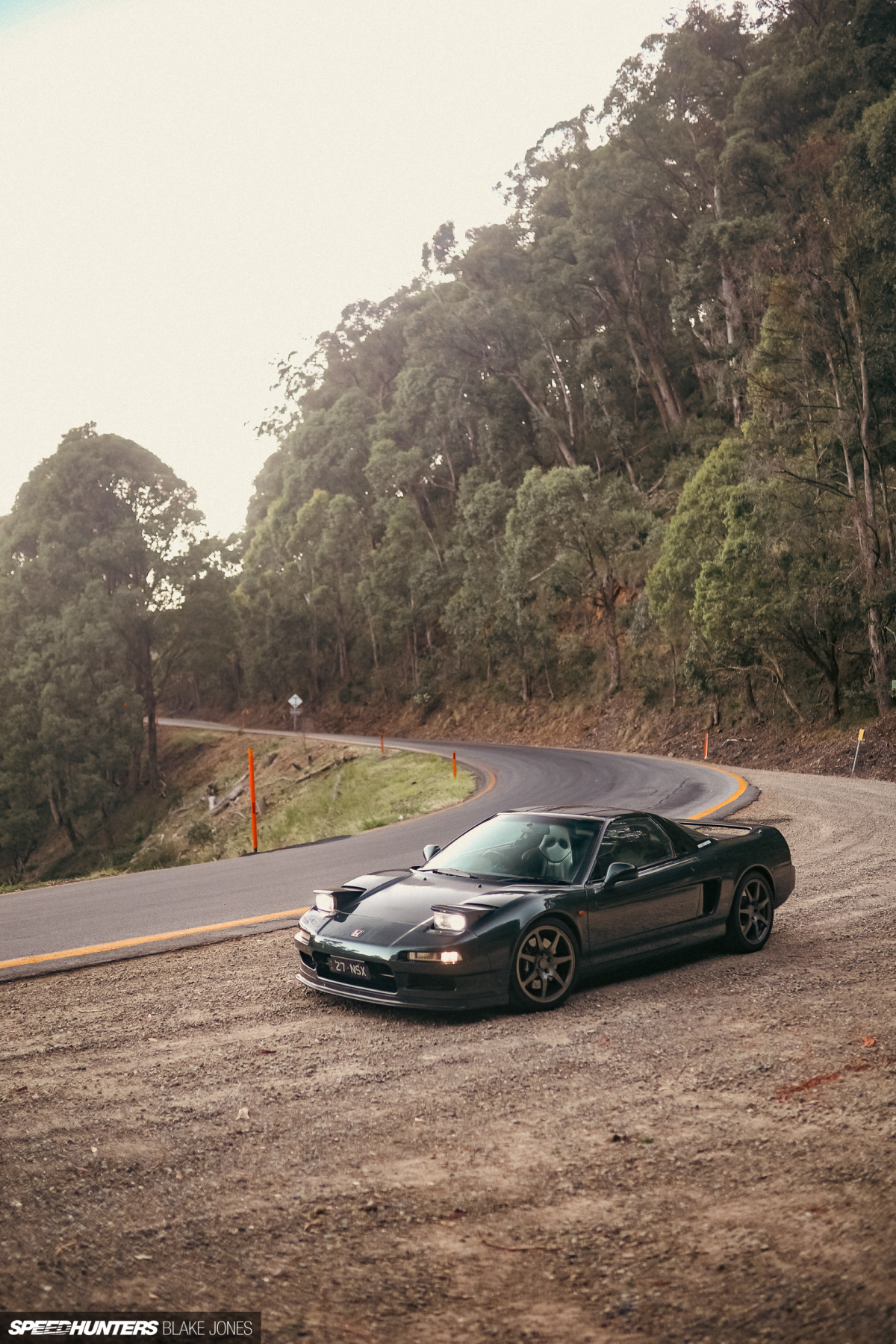
All the while I’ve been driving the car whenever possible, with almost 100,000kms on the clock now.
Best of all, a great community of NSX owners has been building up here in Melbourne, meaning plenty of long drives and nerdy chats with fellow enthusiasts. And that’s what it’s all about at the end of the day.
Blake Jones
Instagram: blaketjones
[email protected]
[ad_2]
Source link

